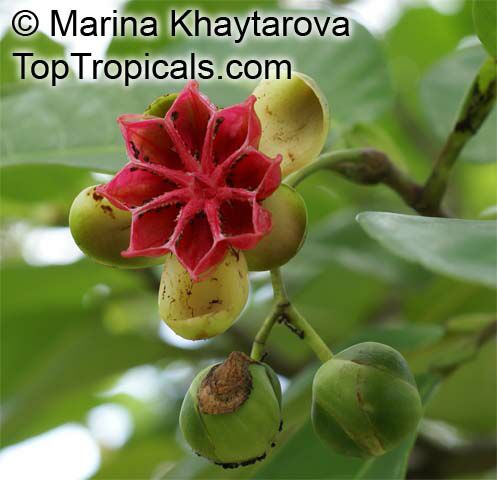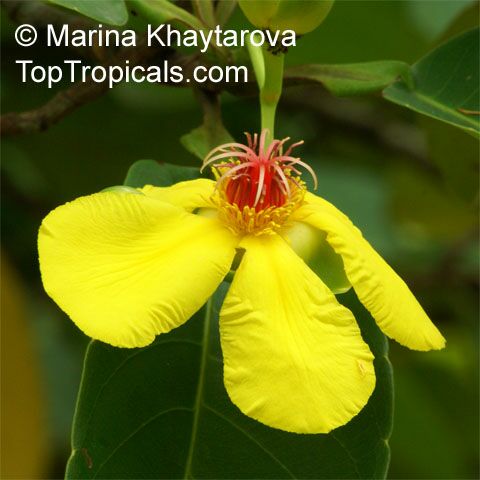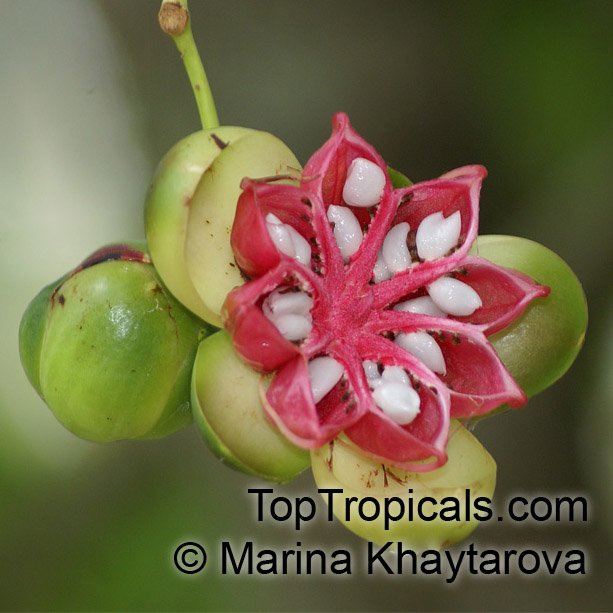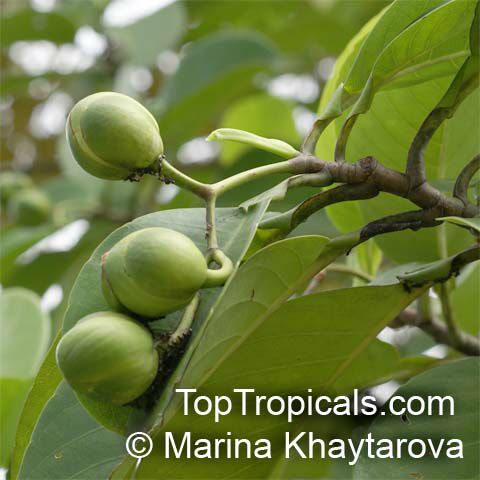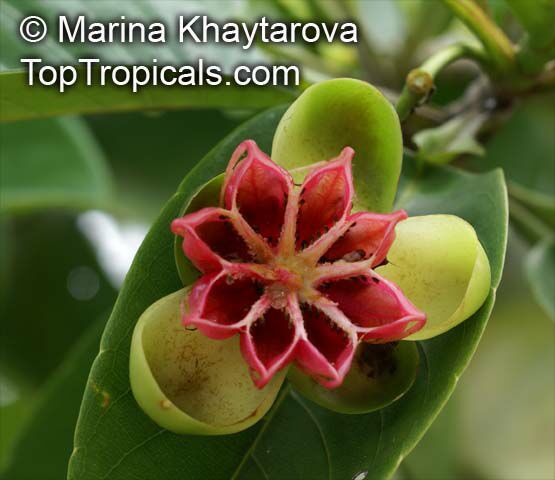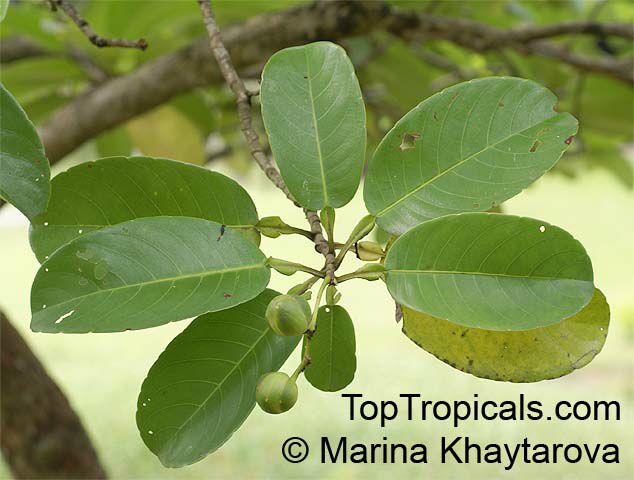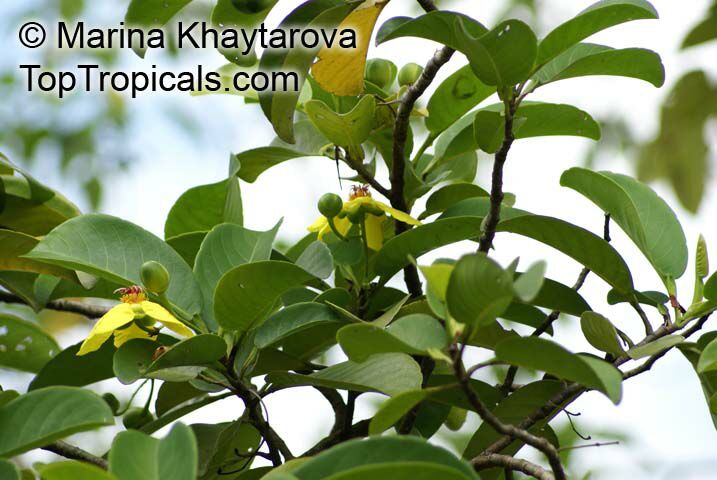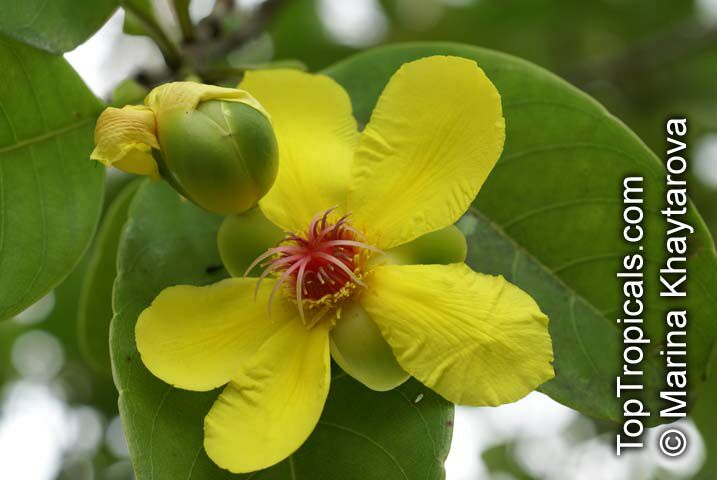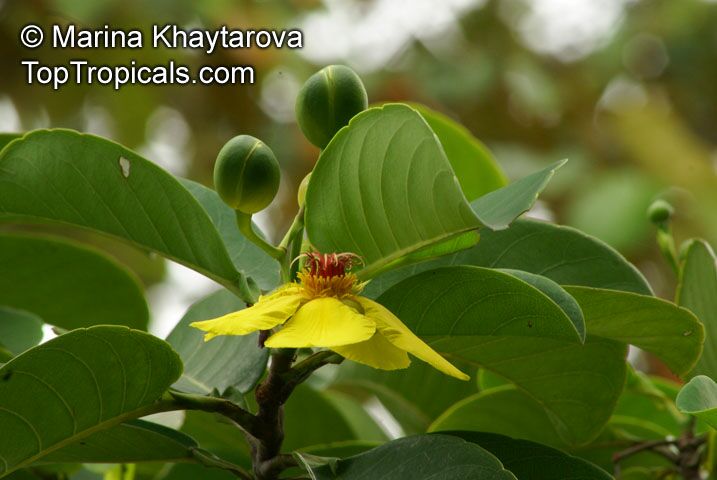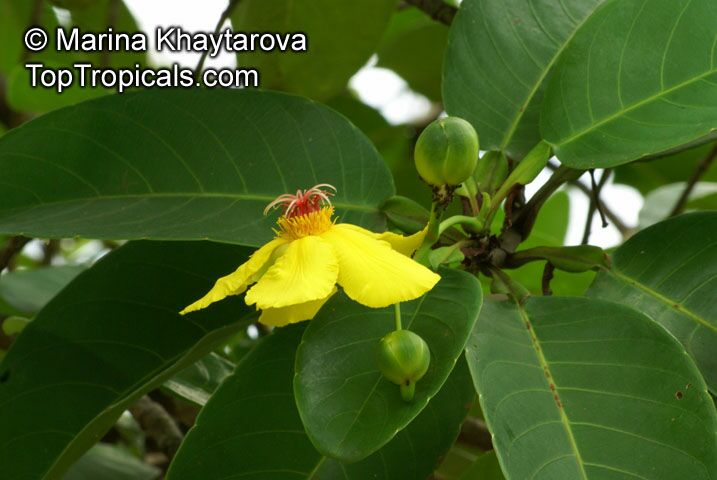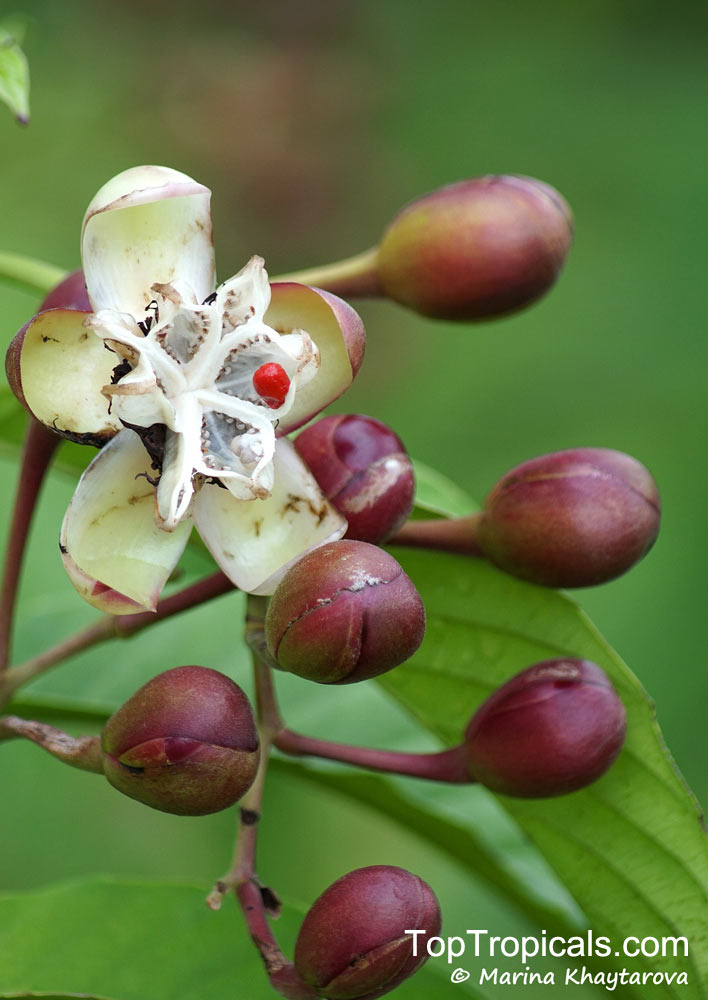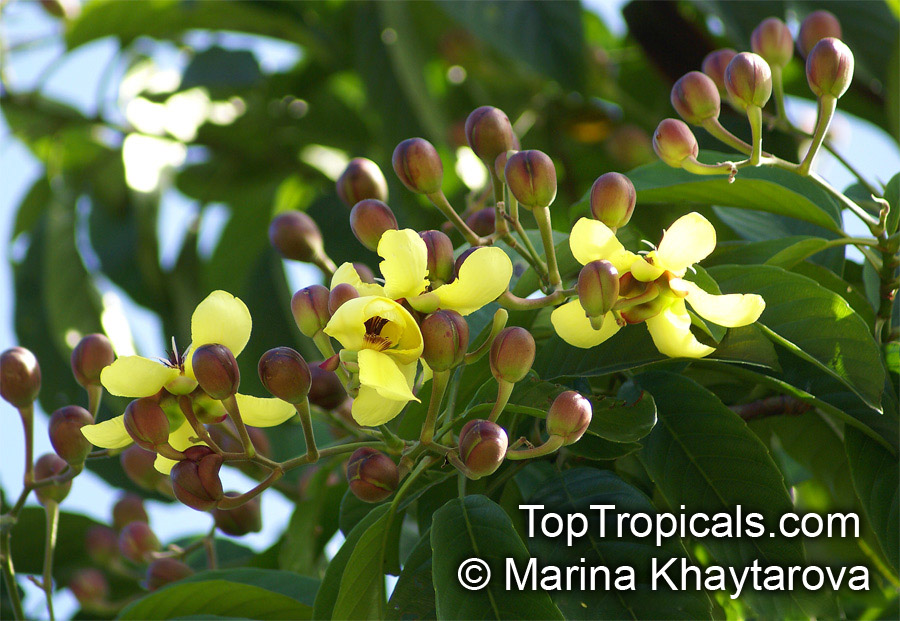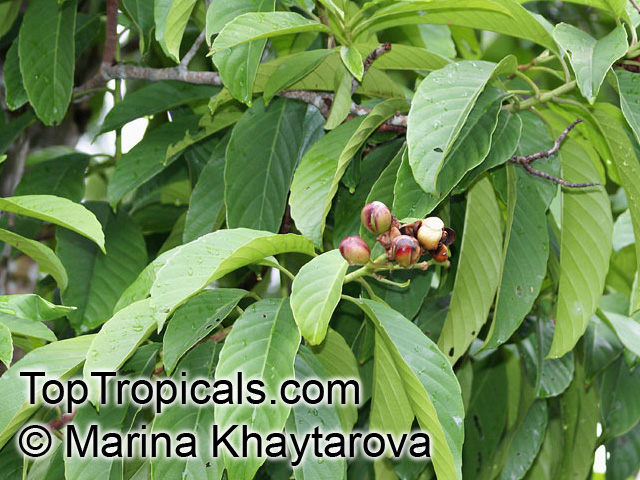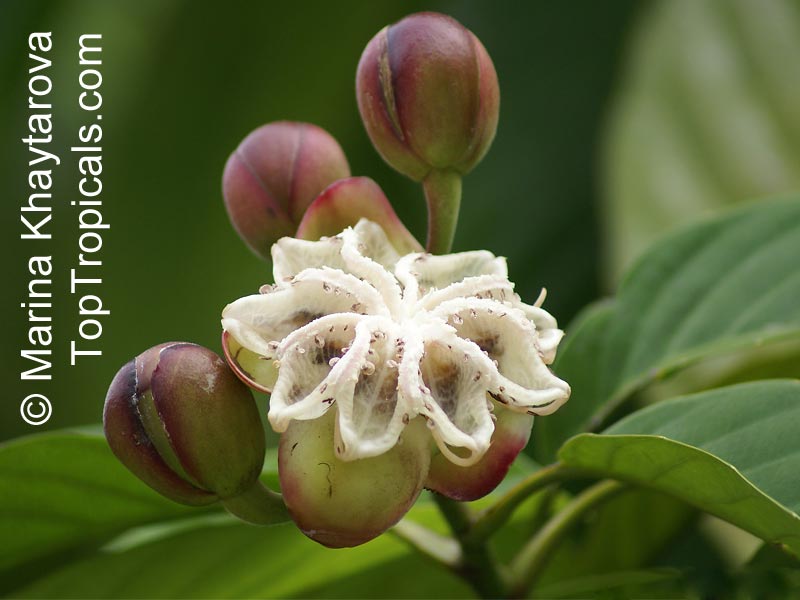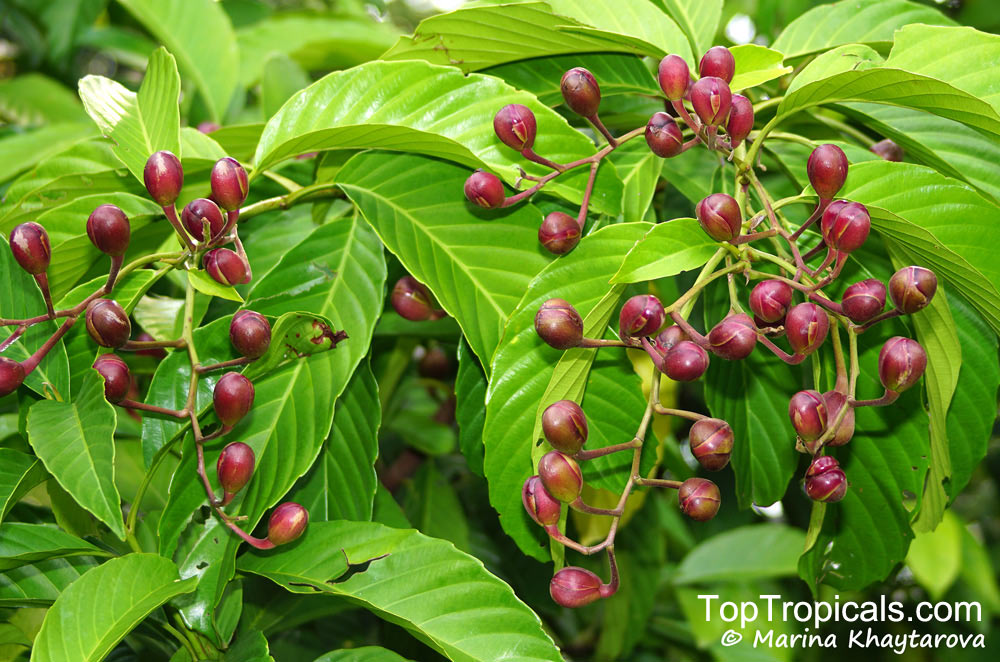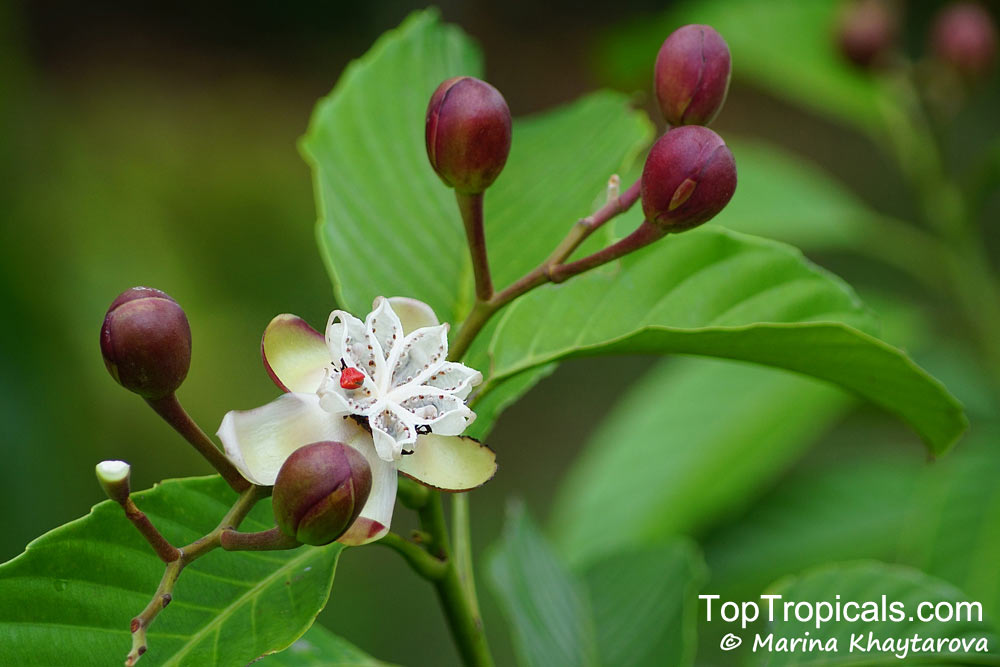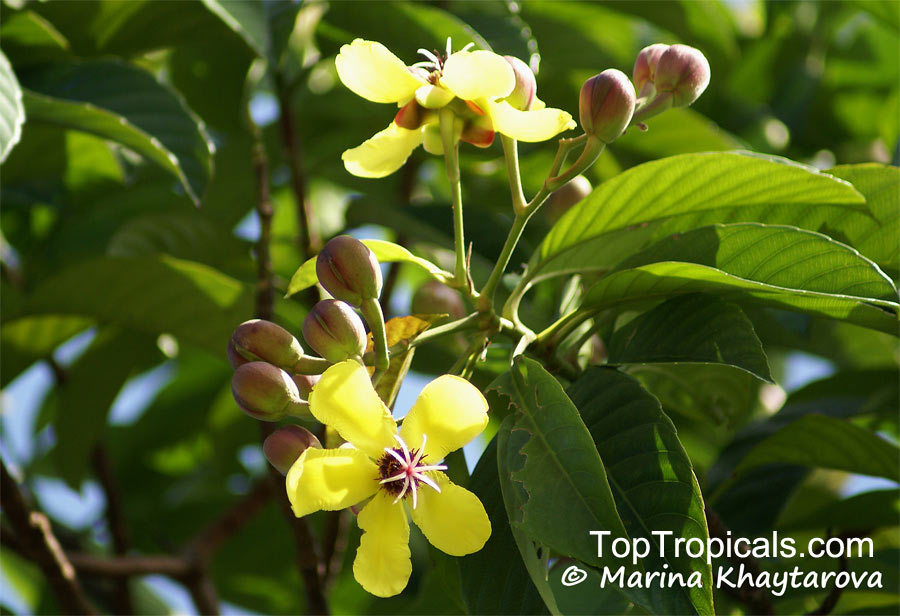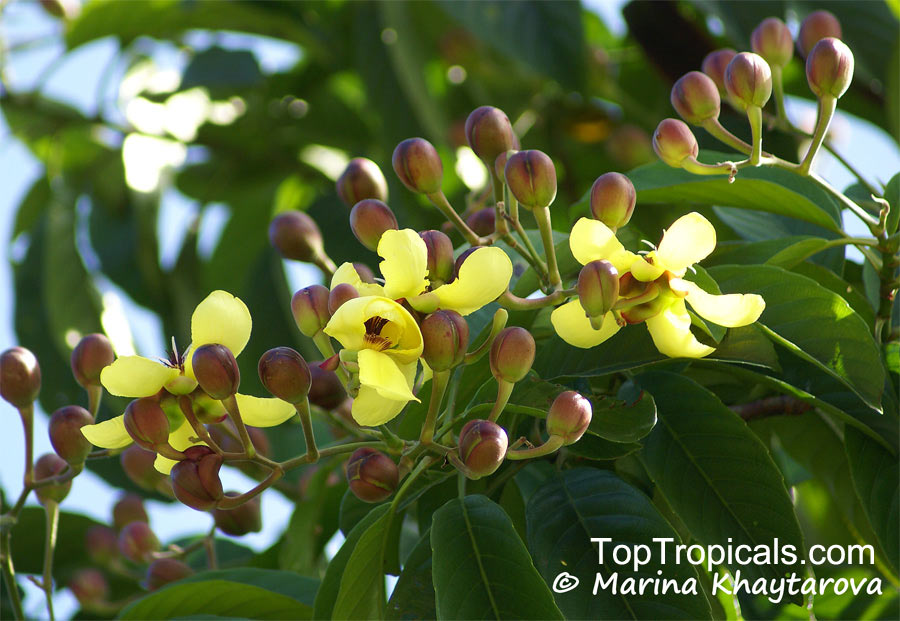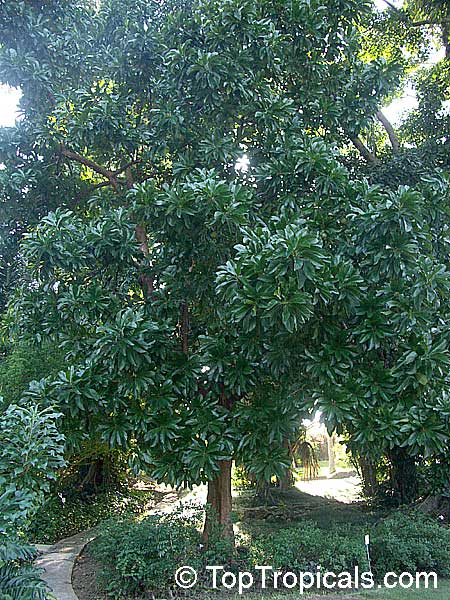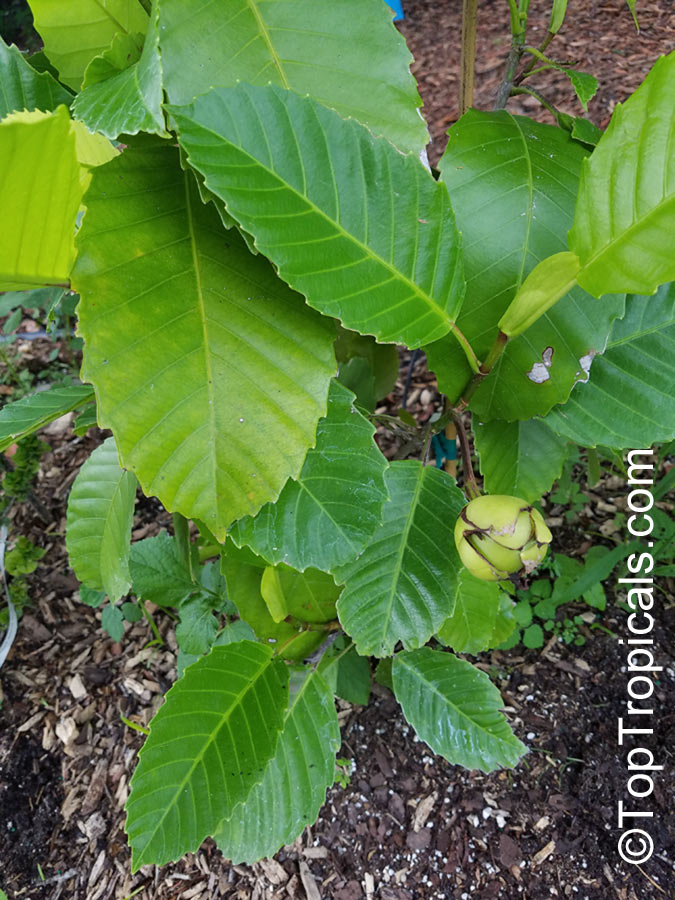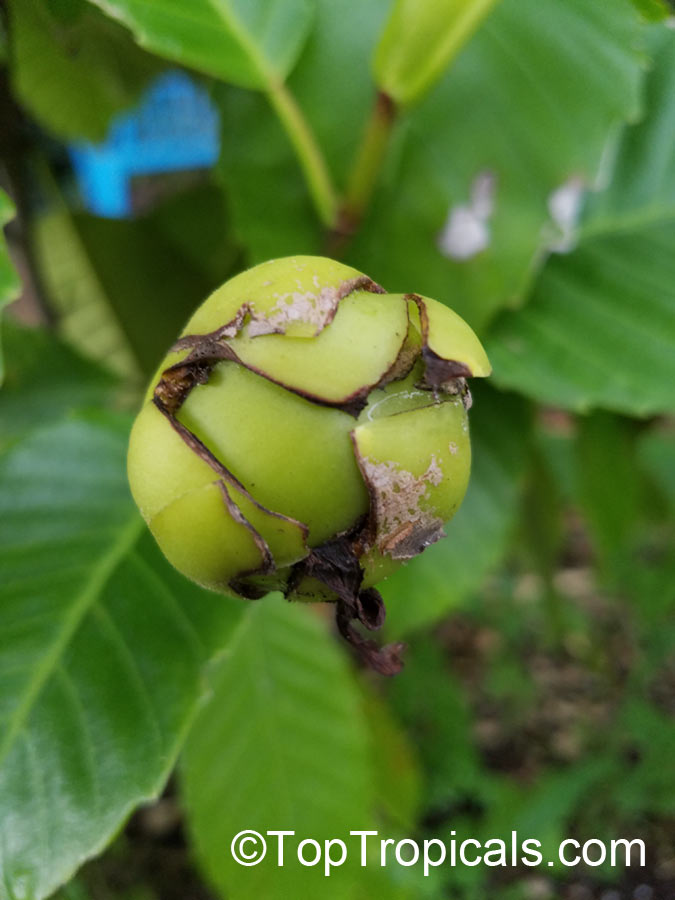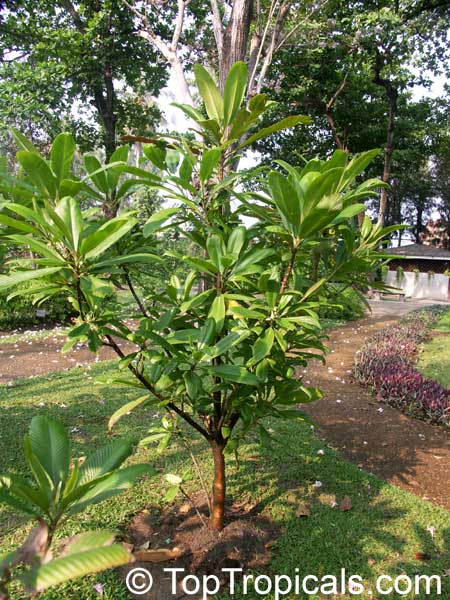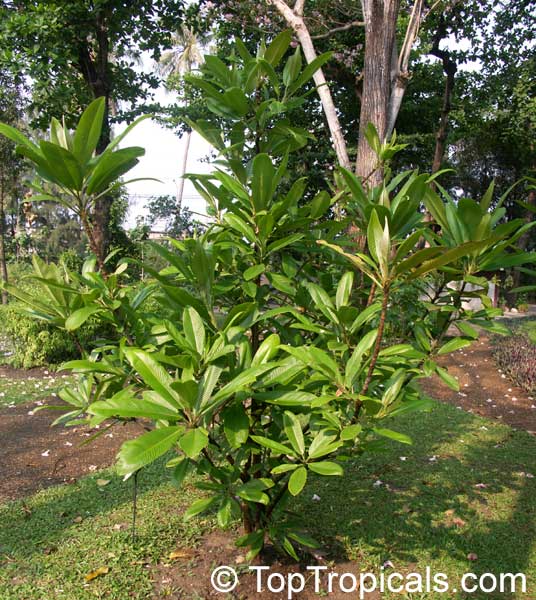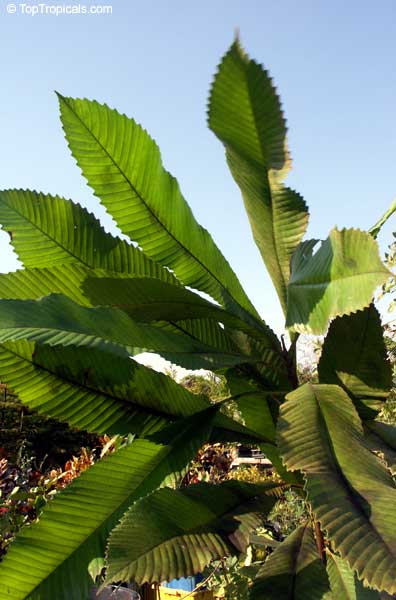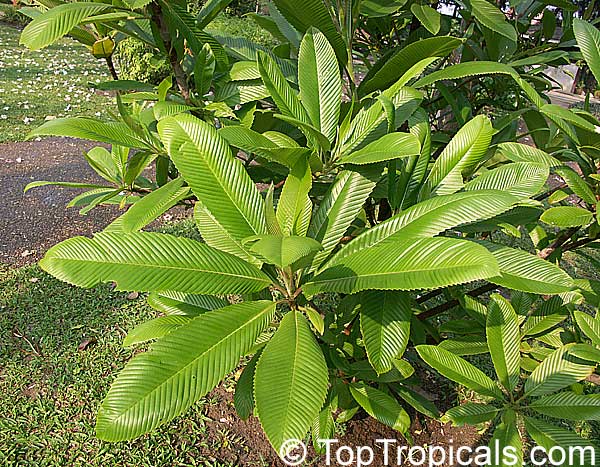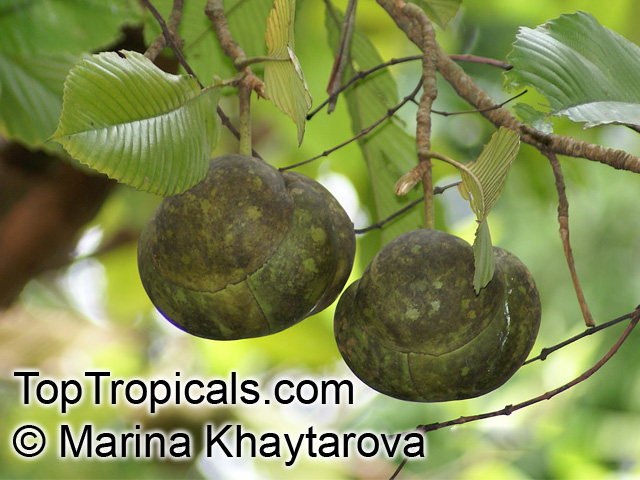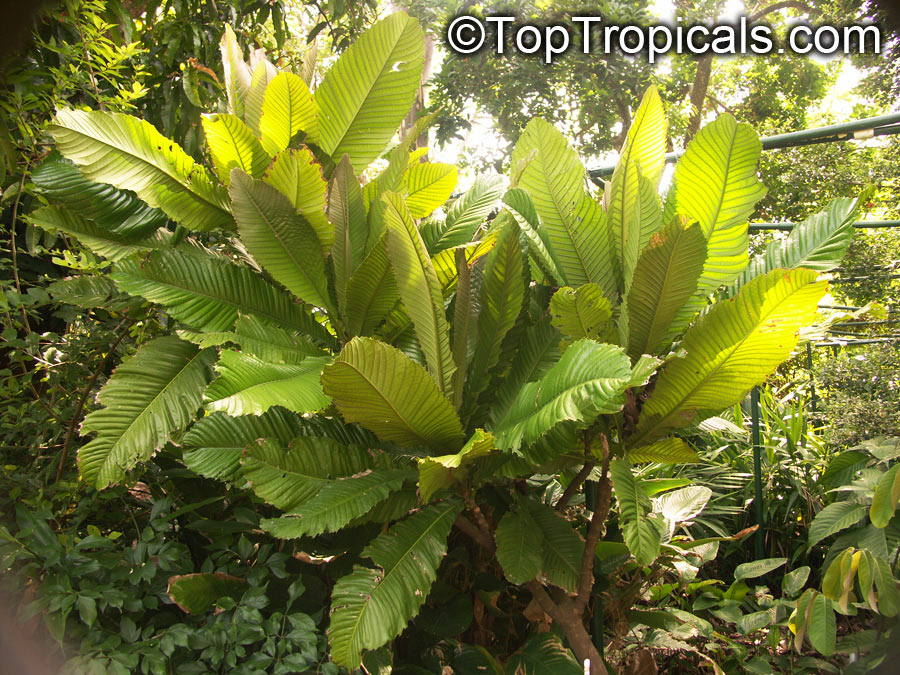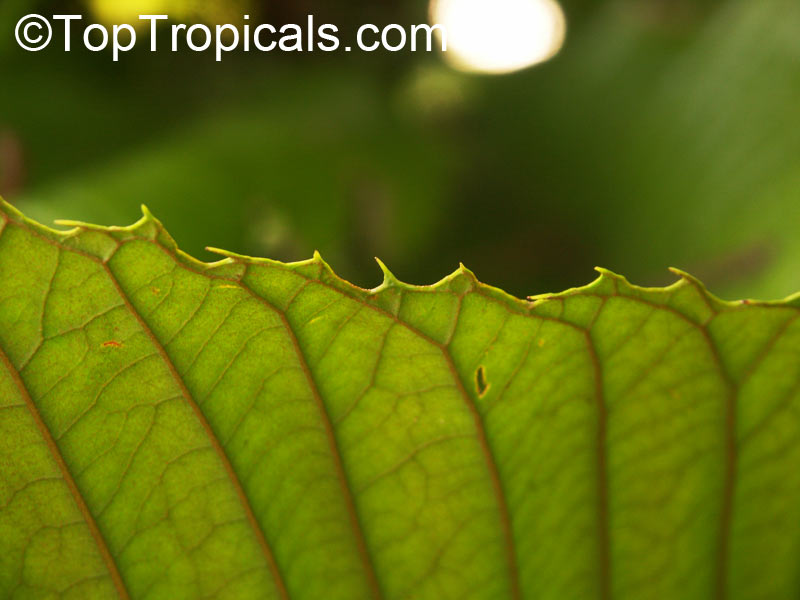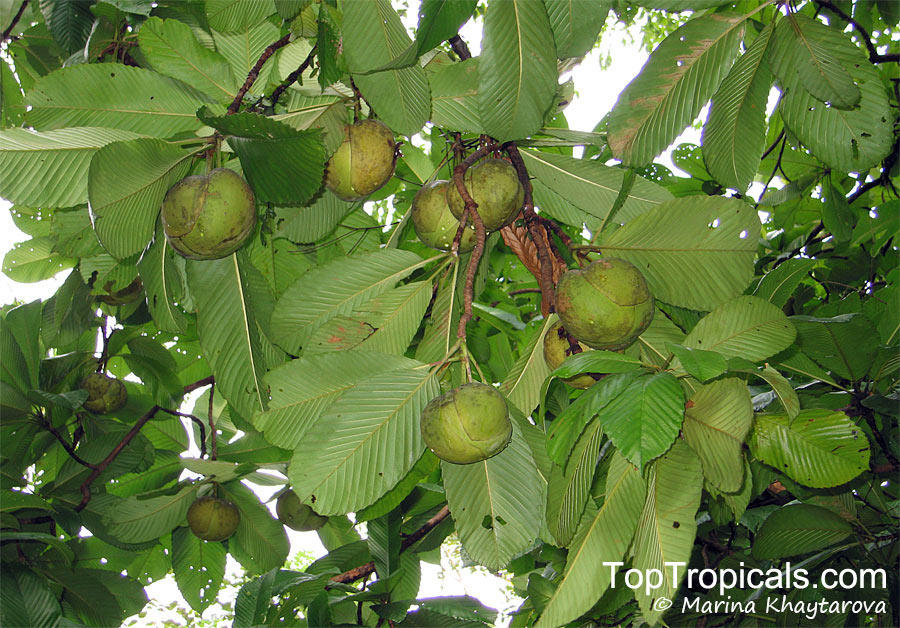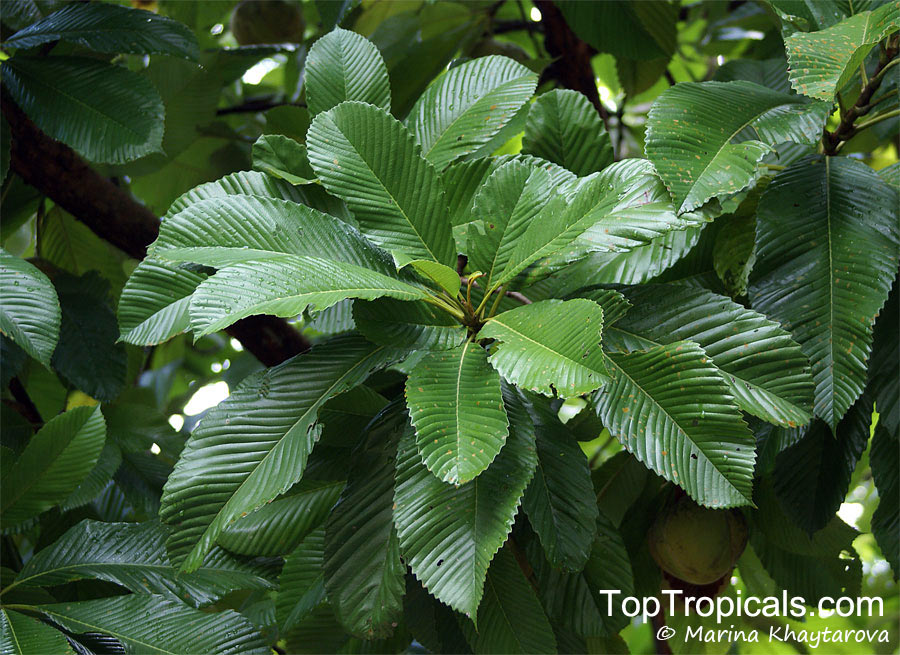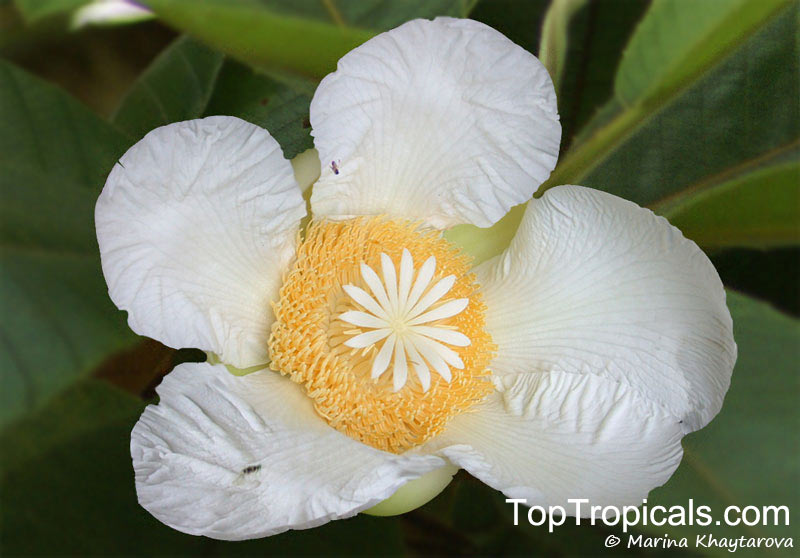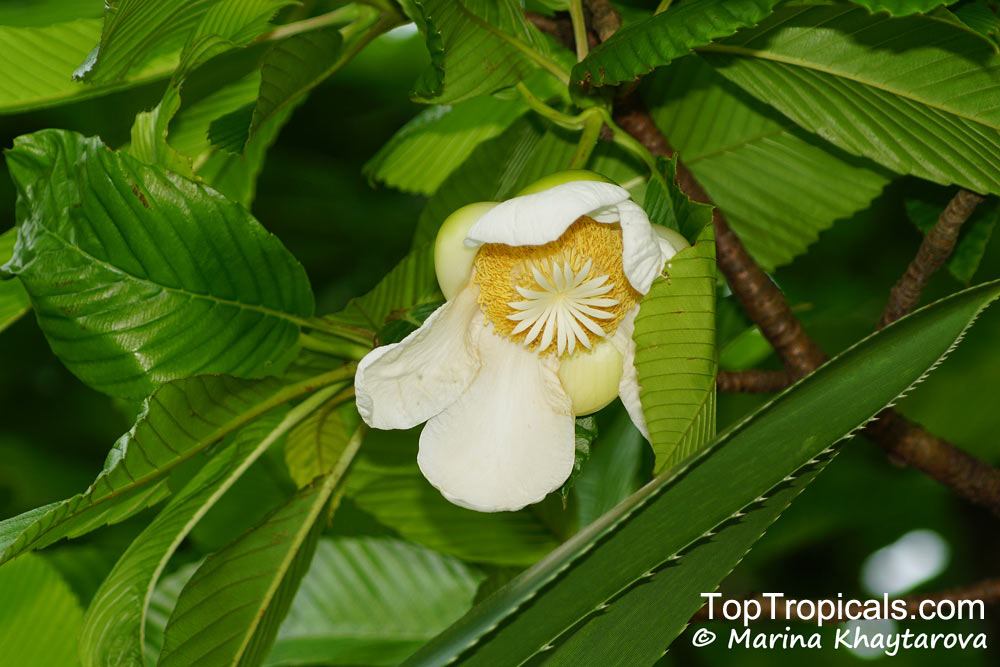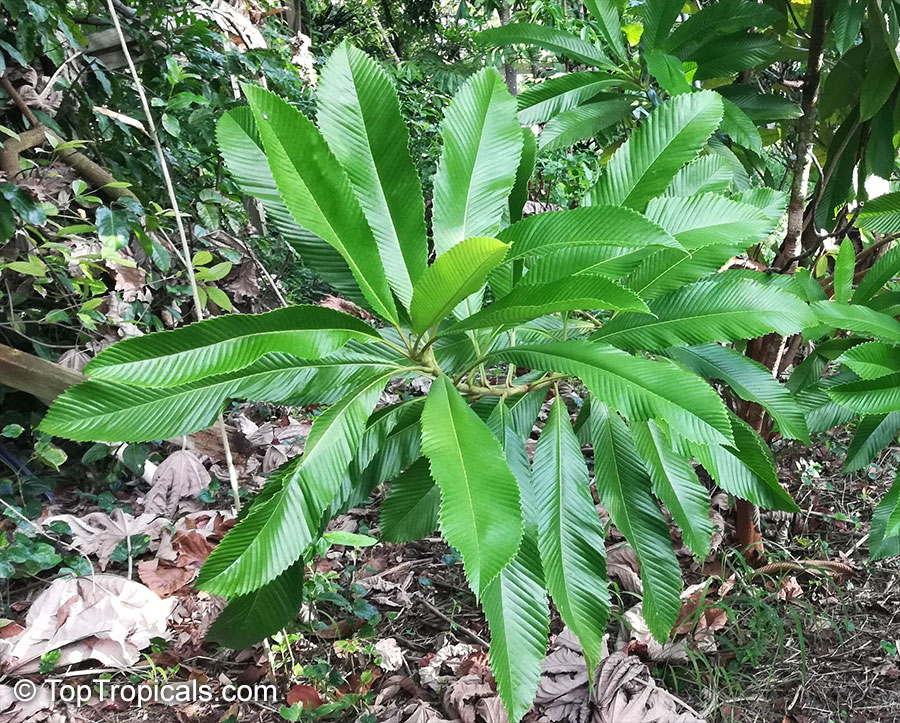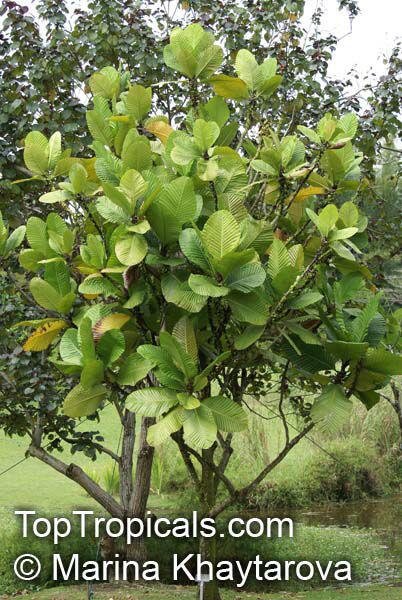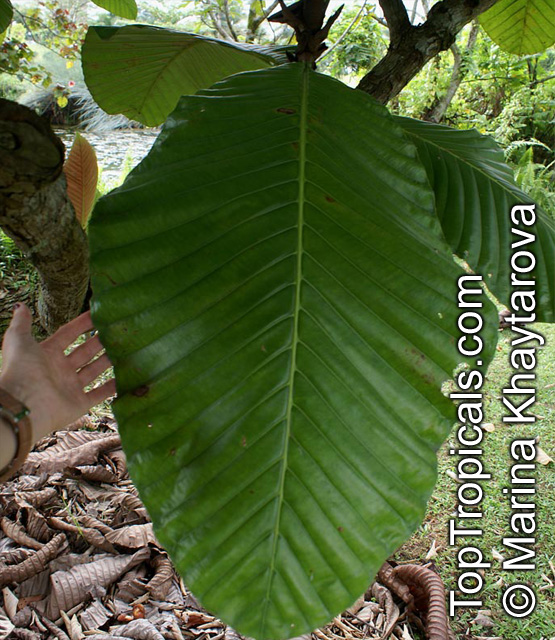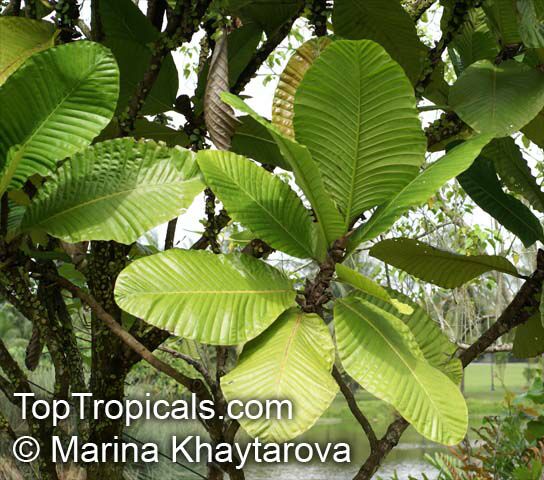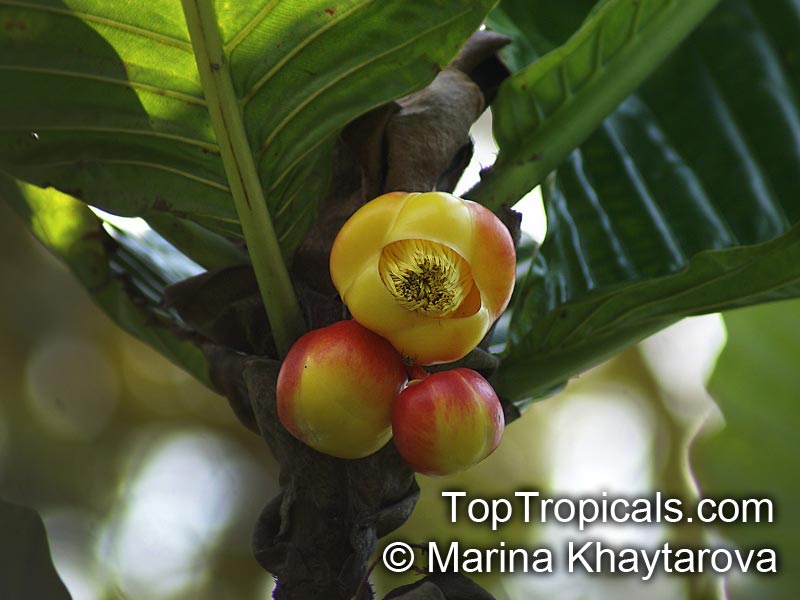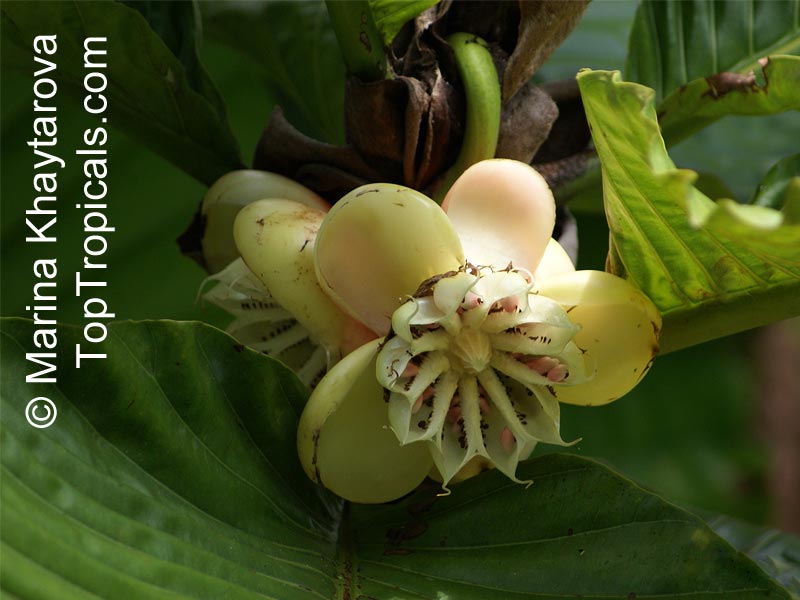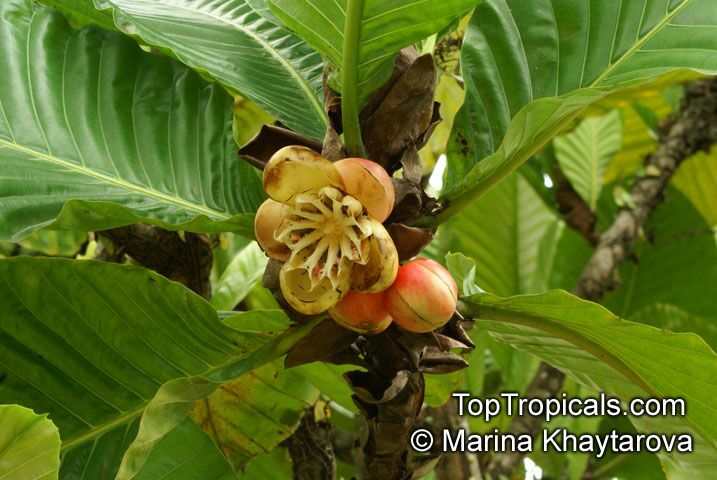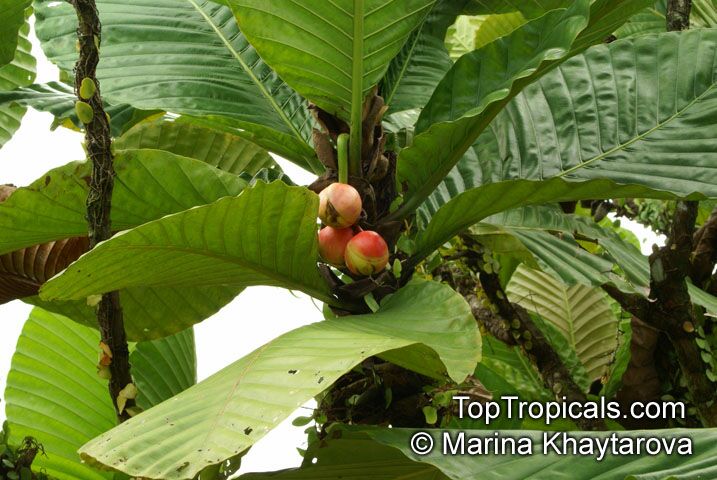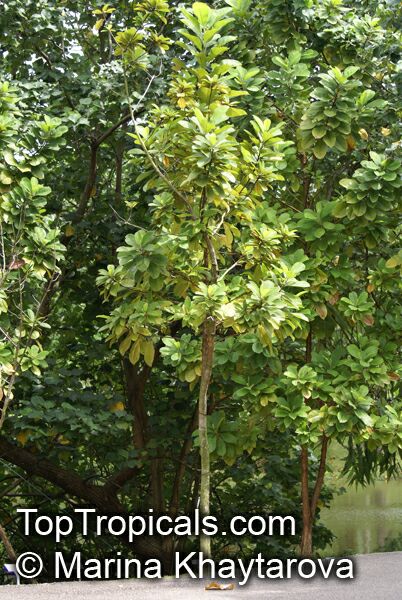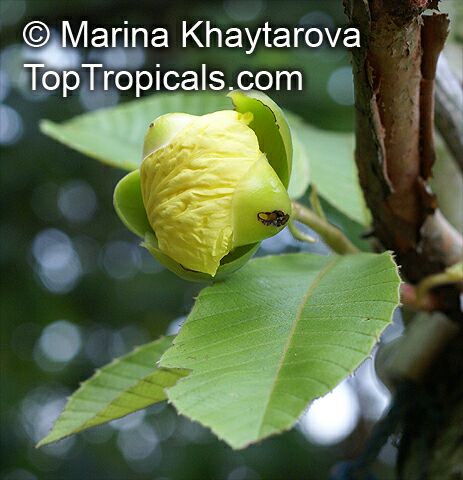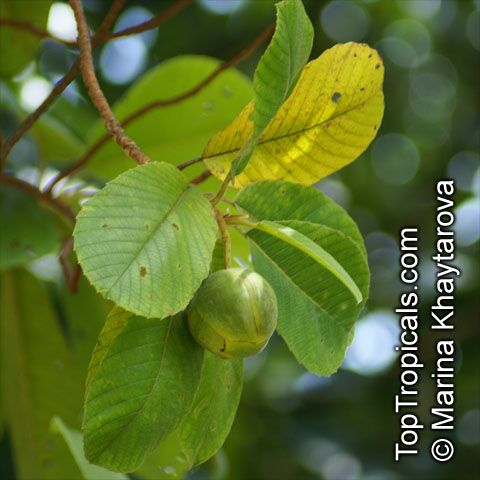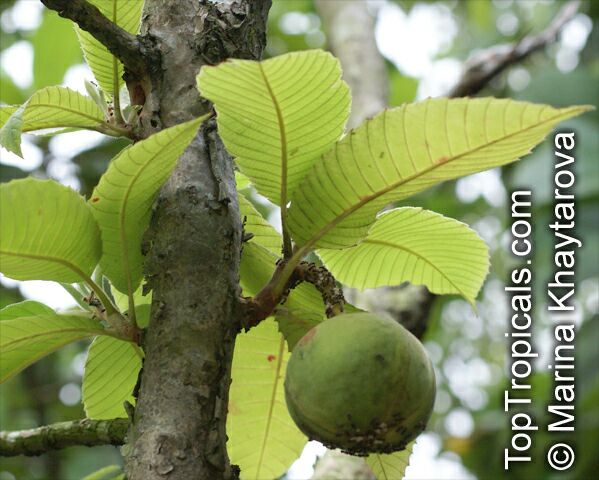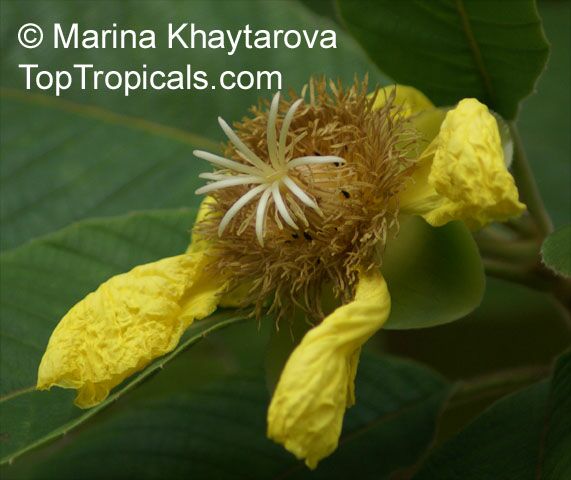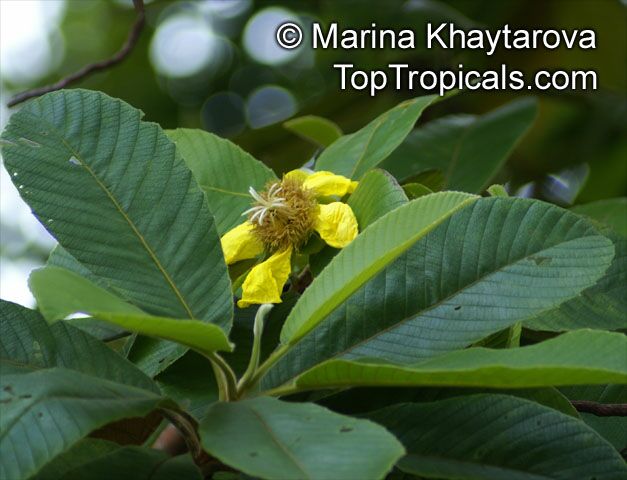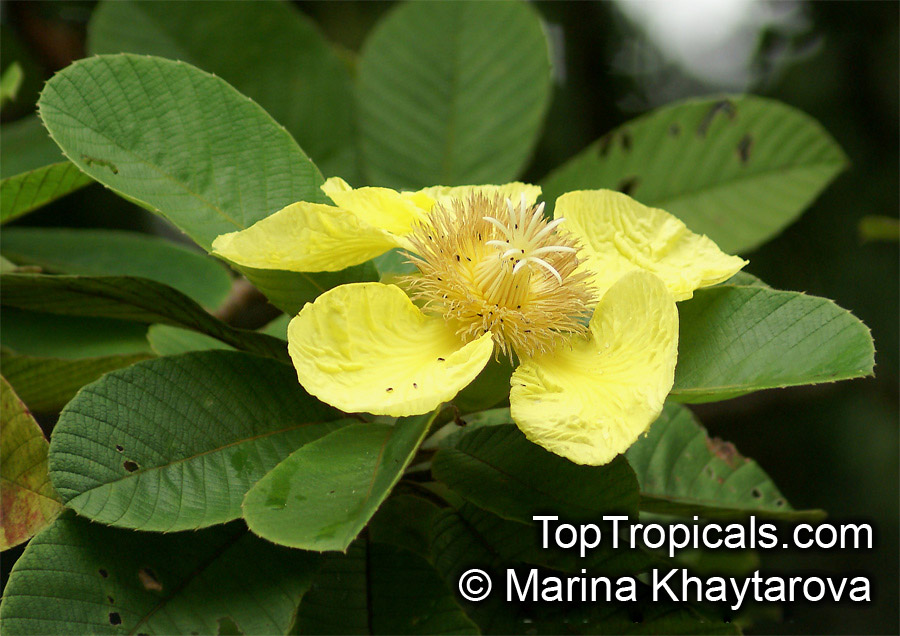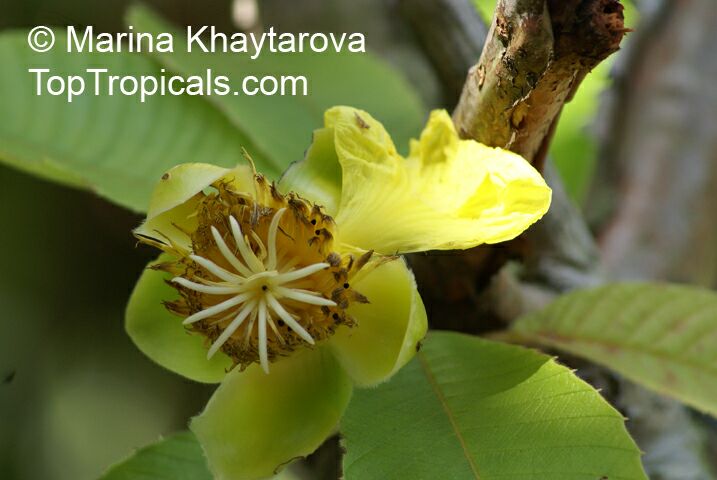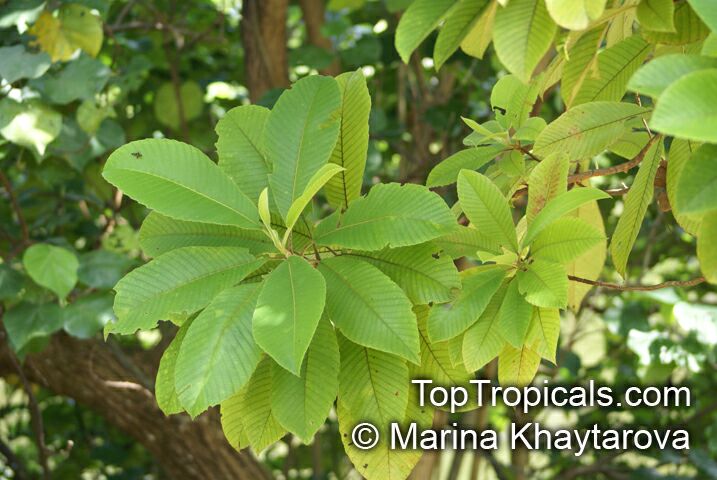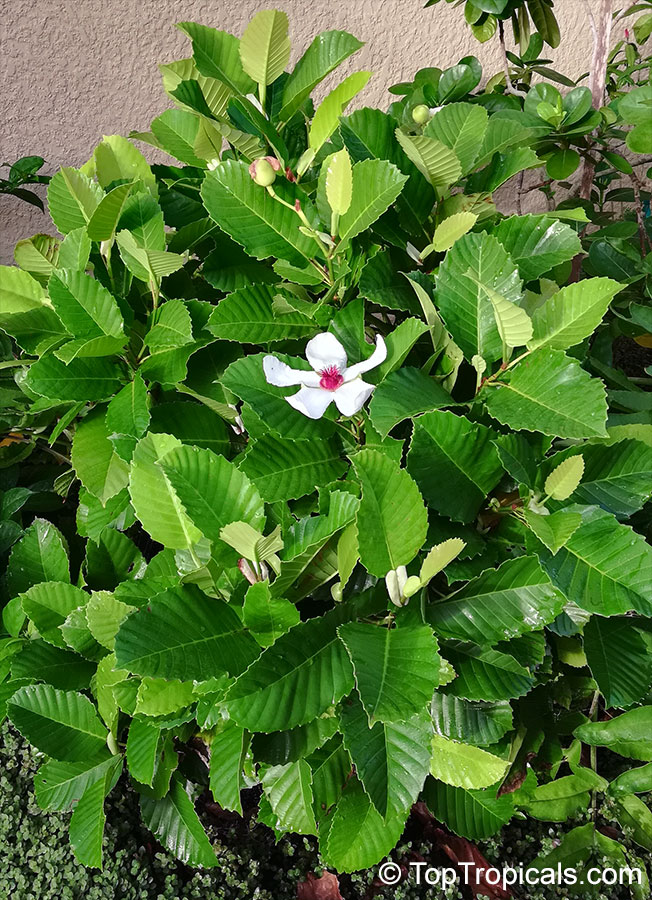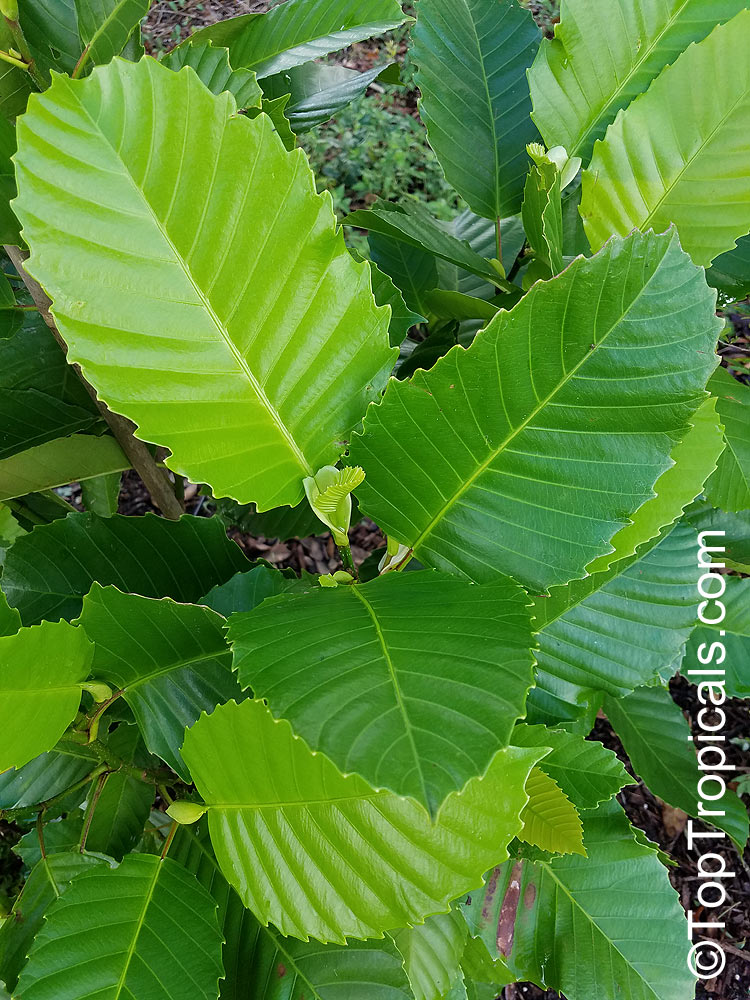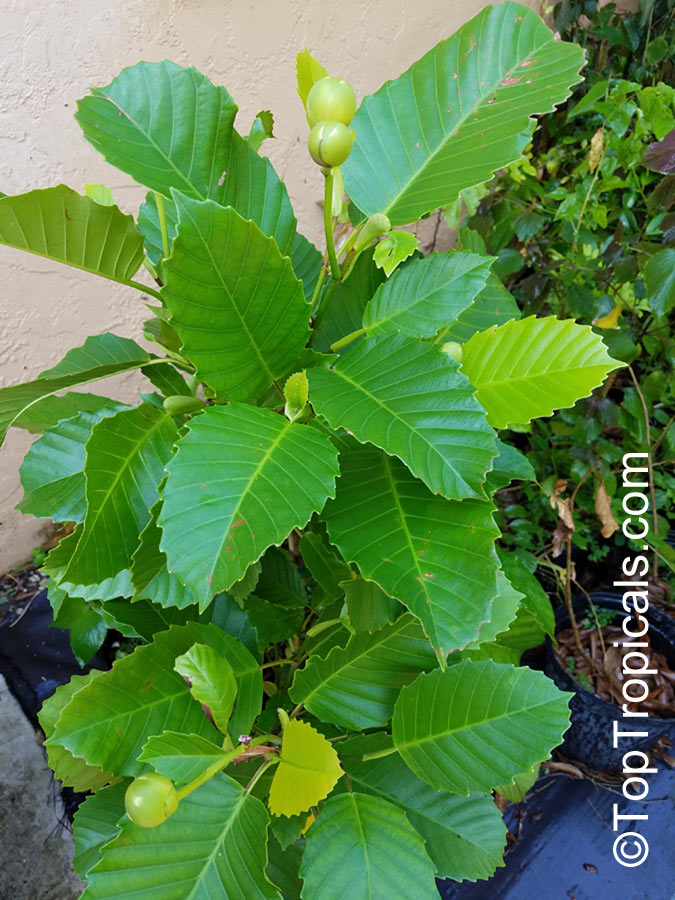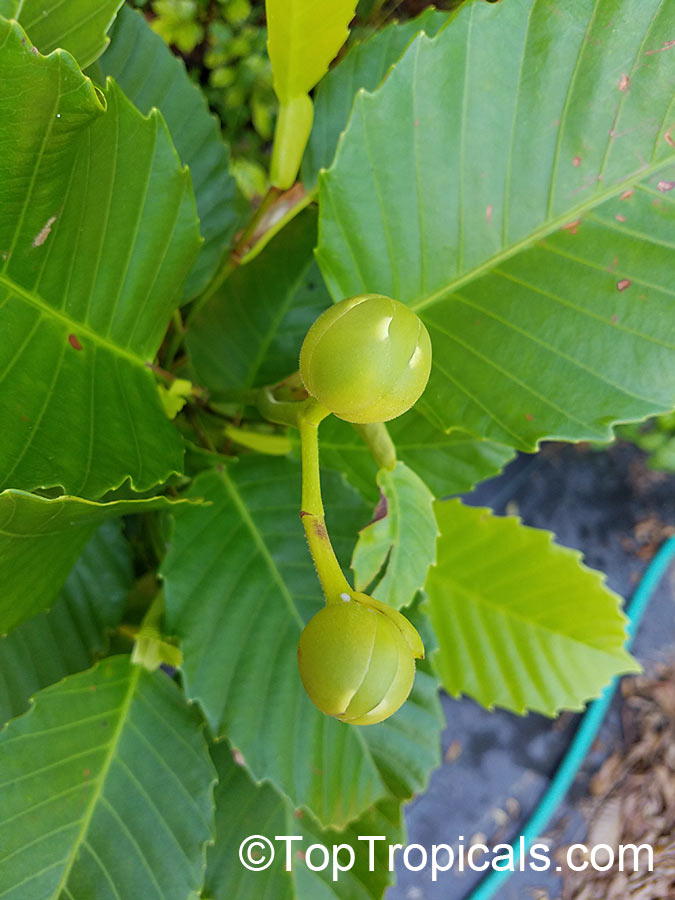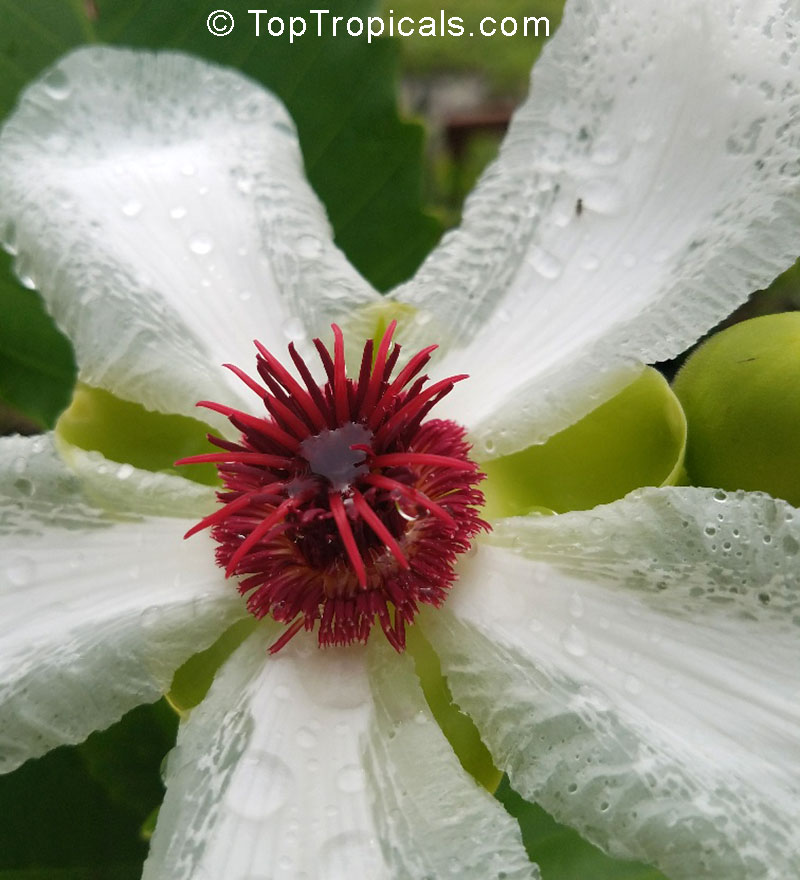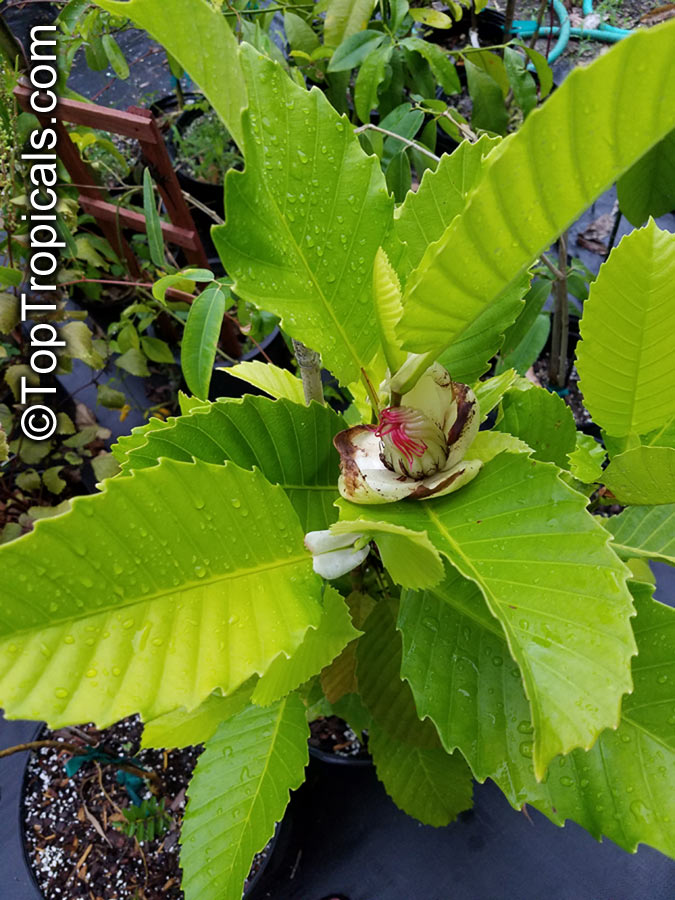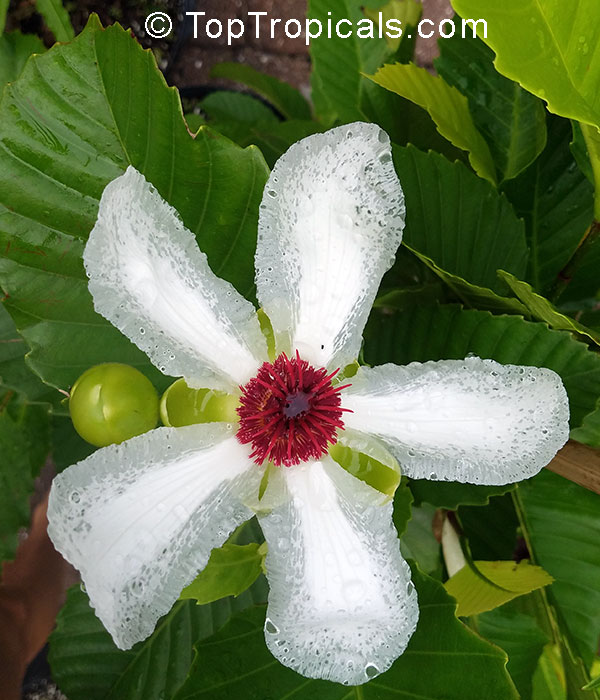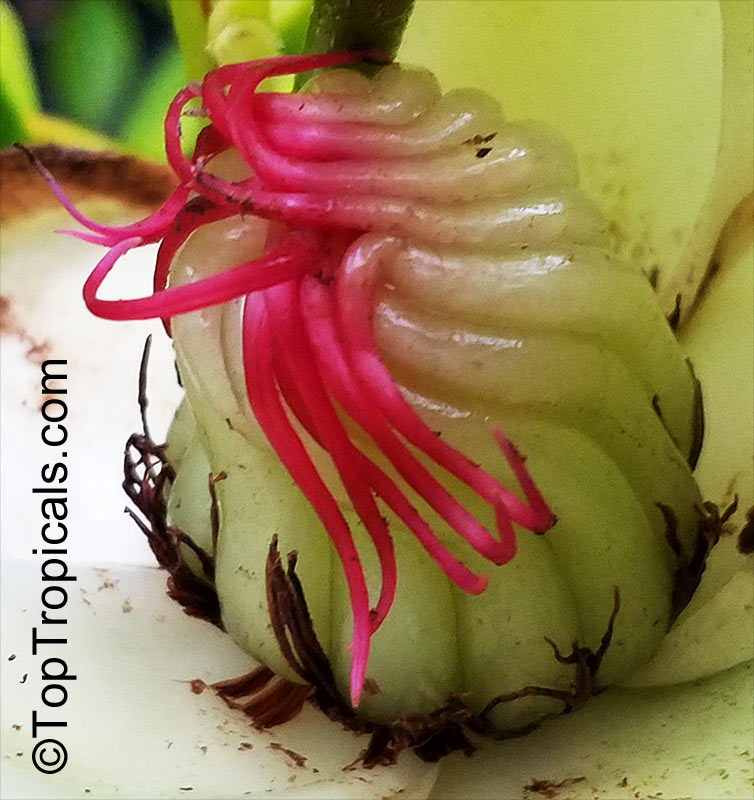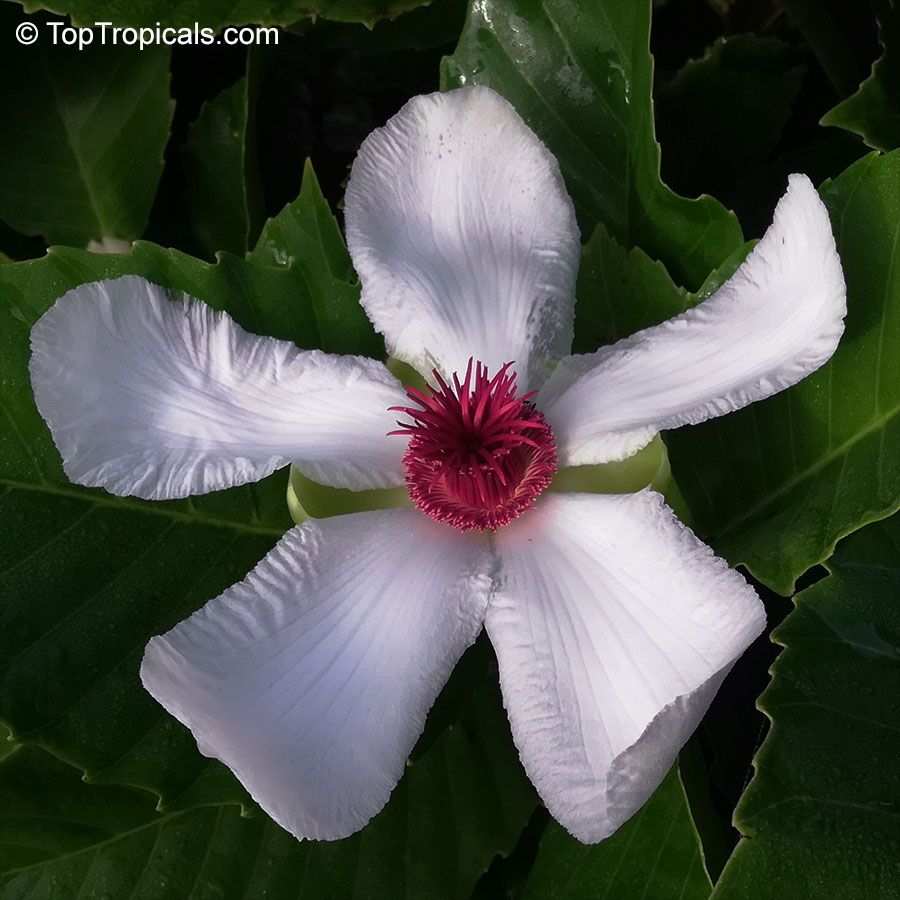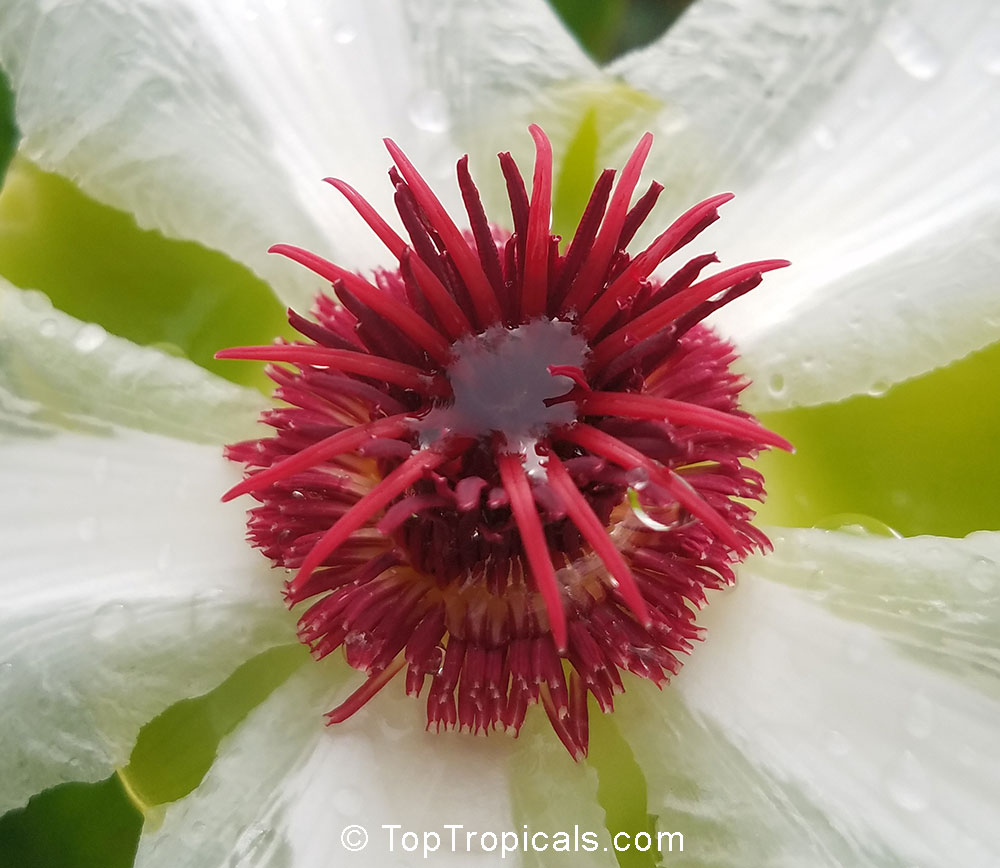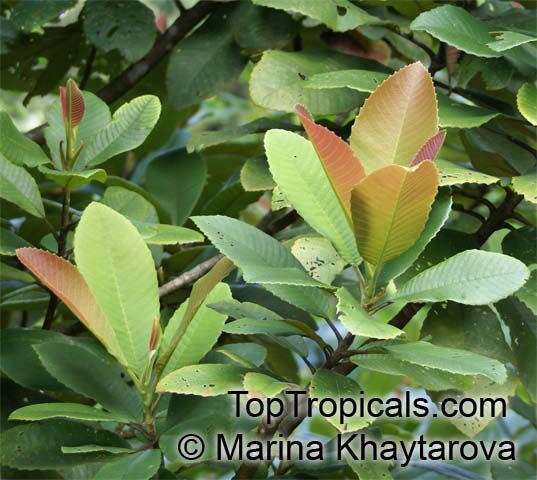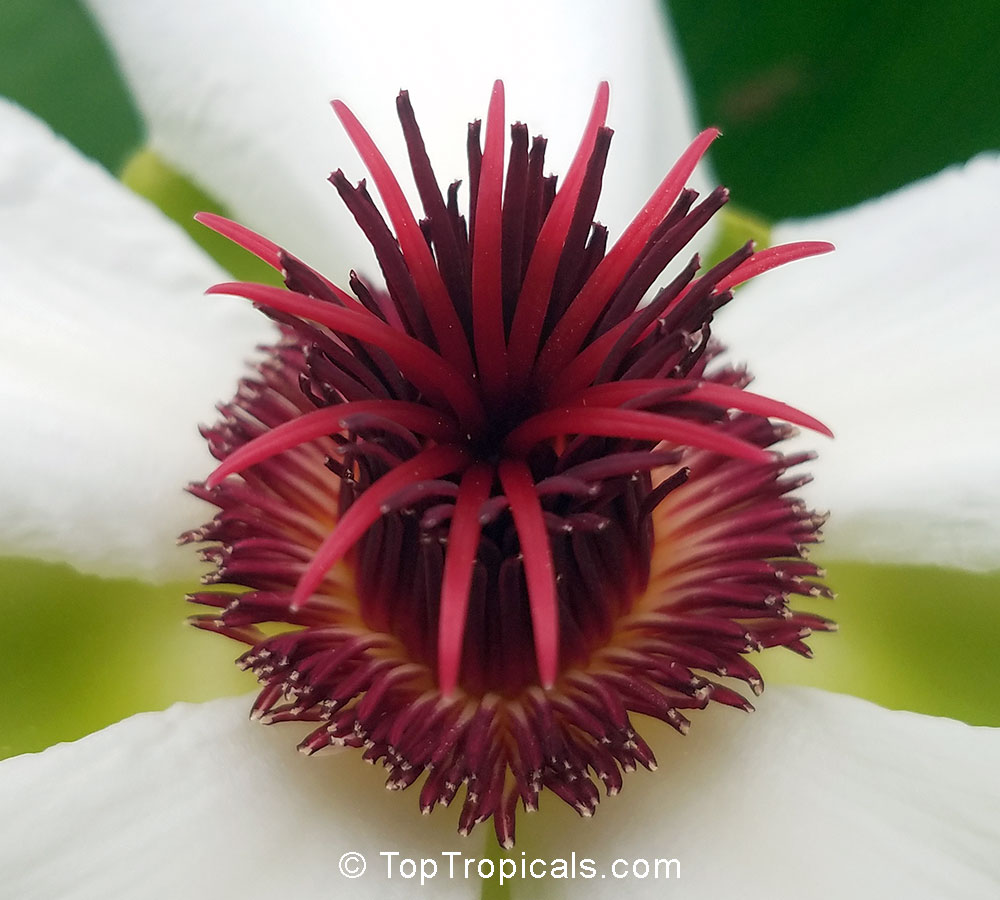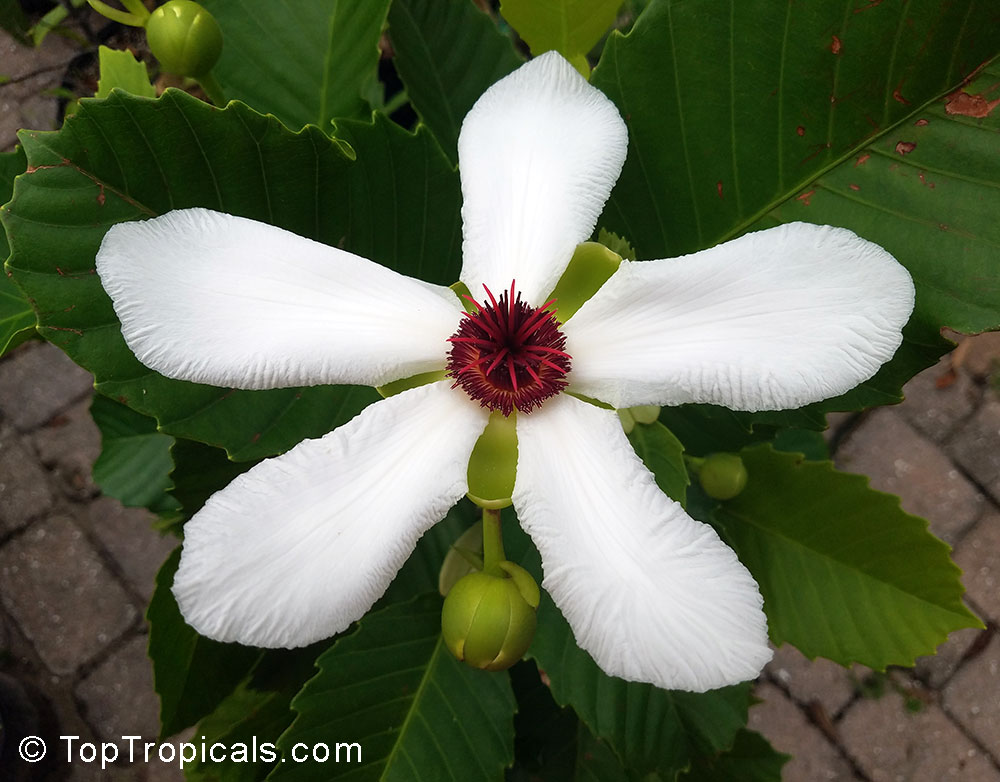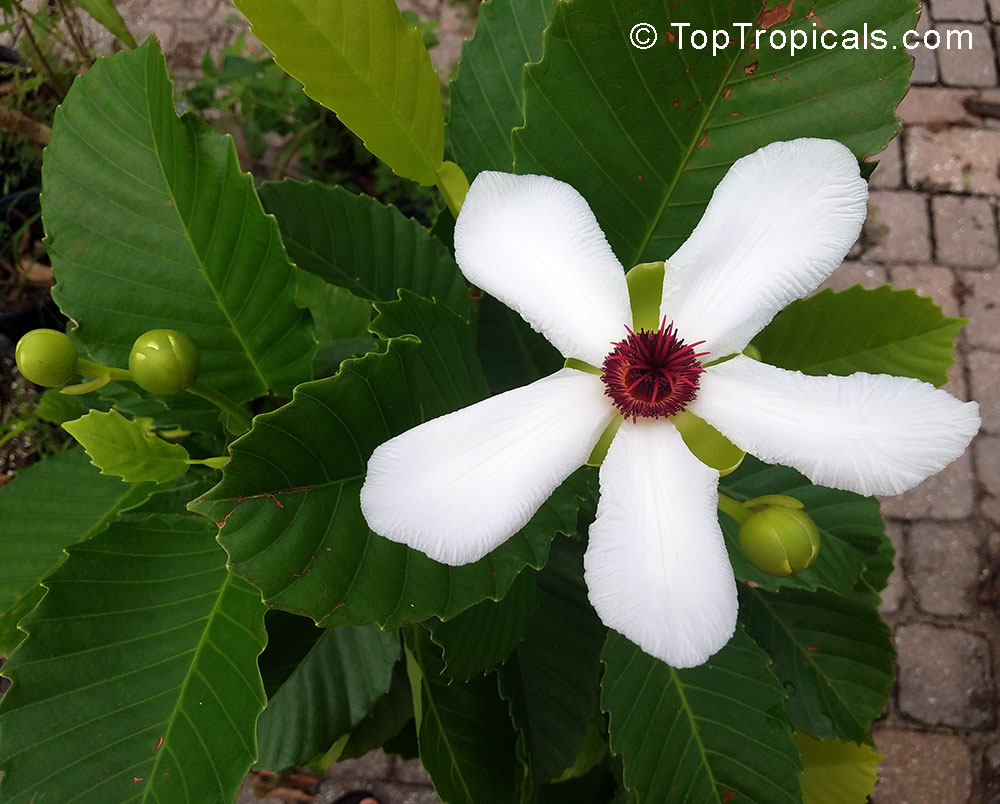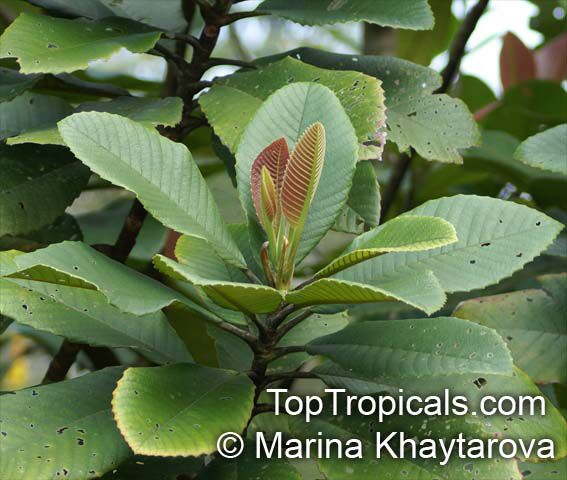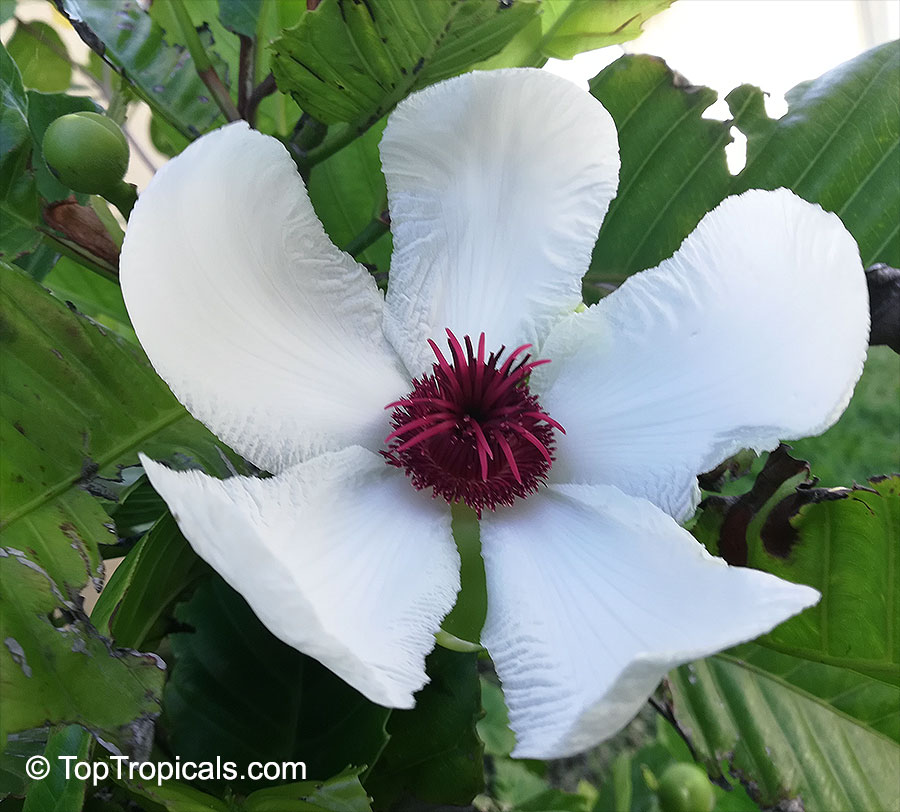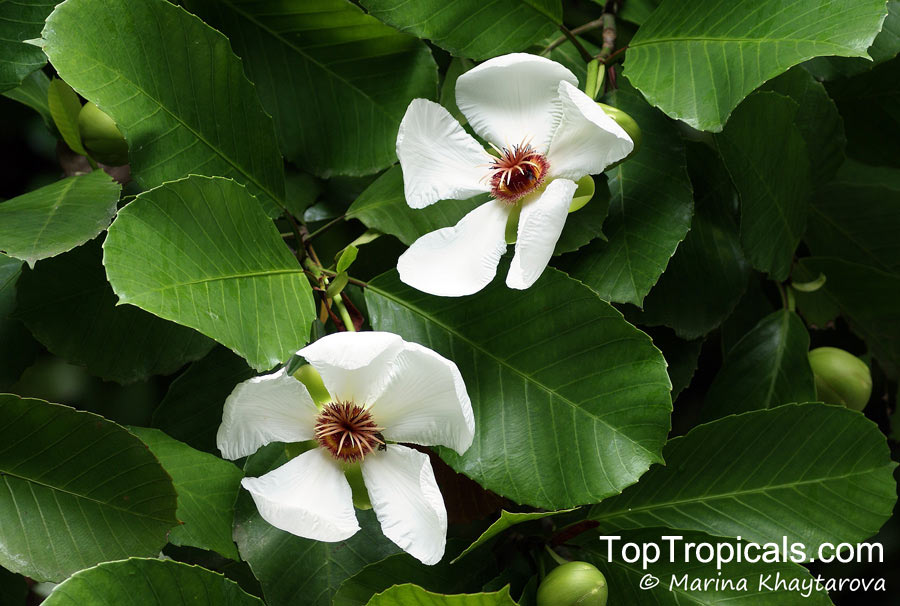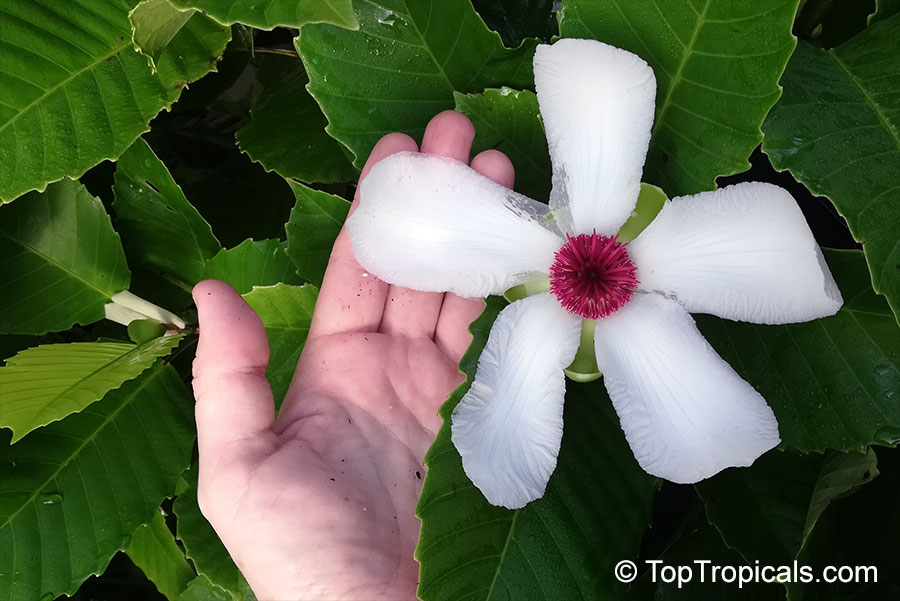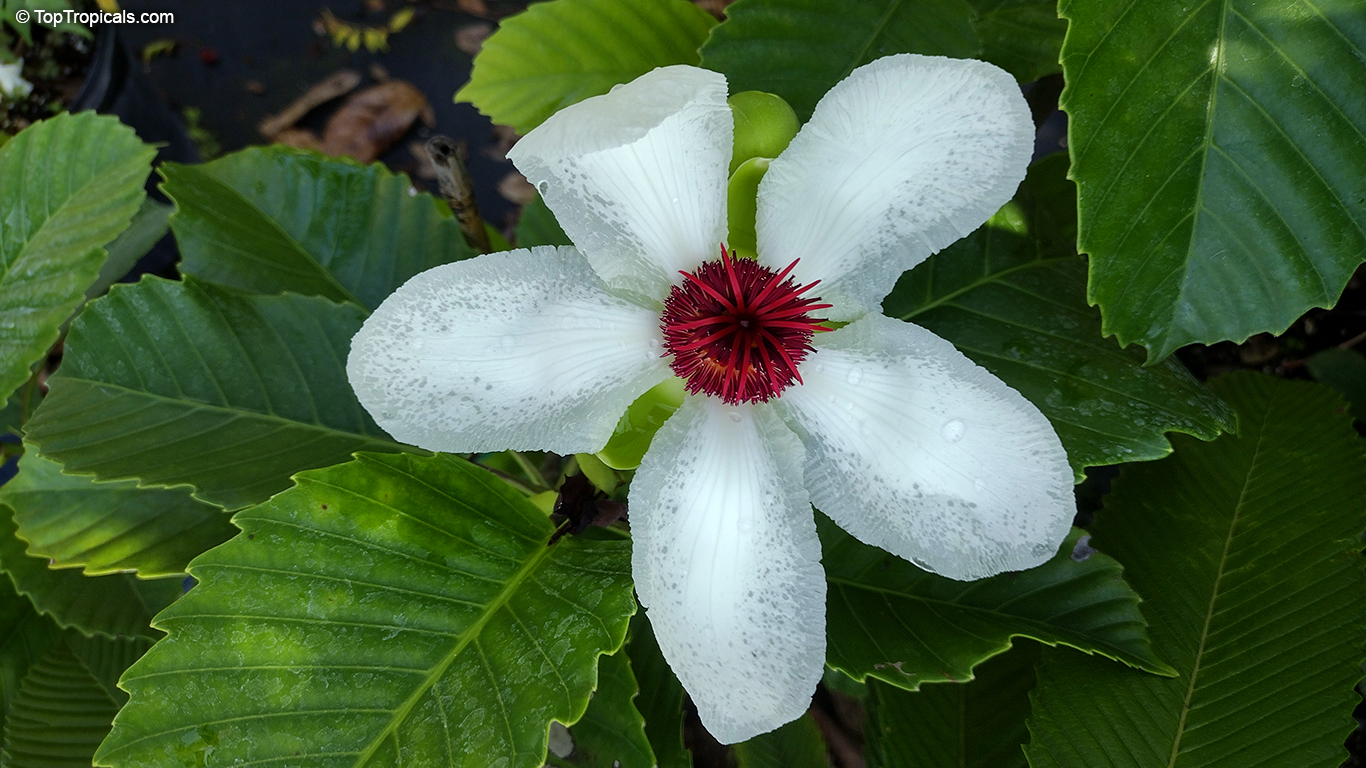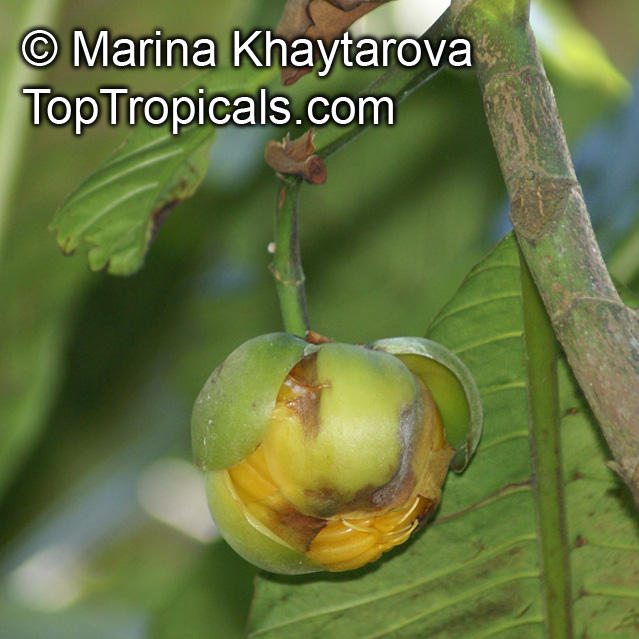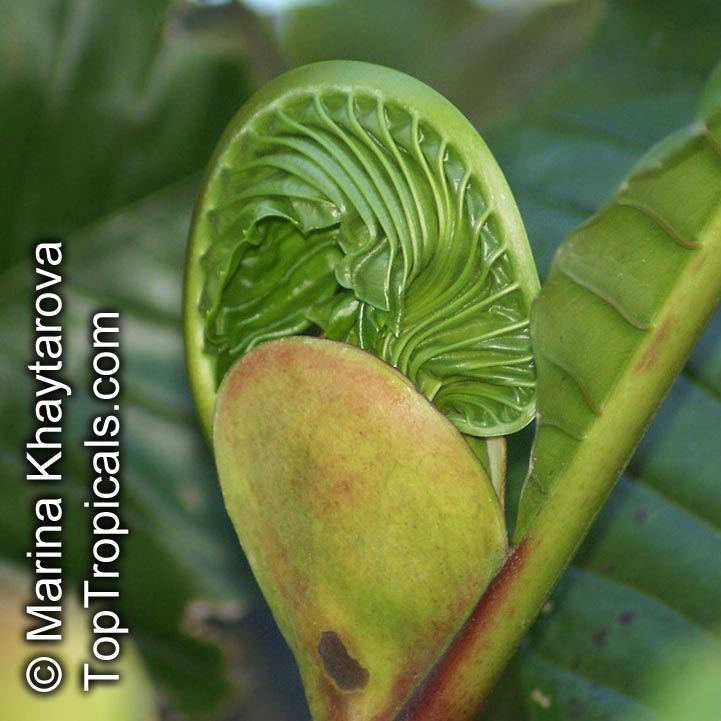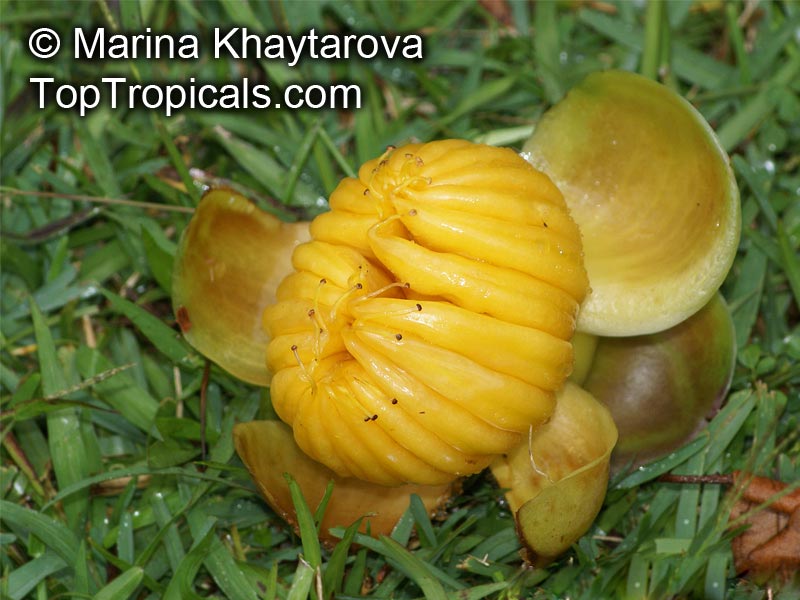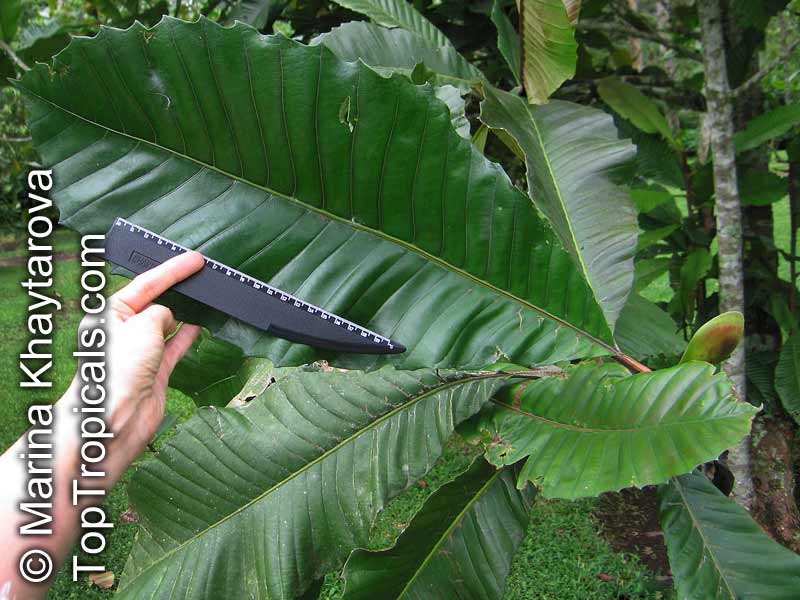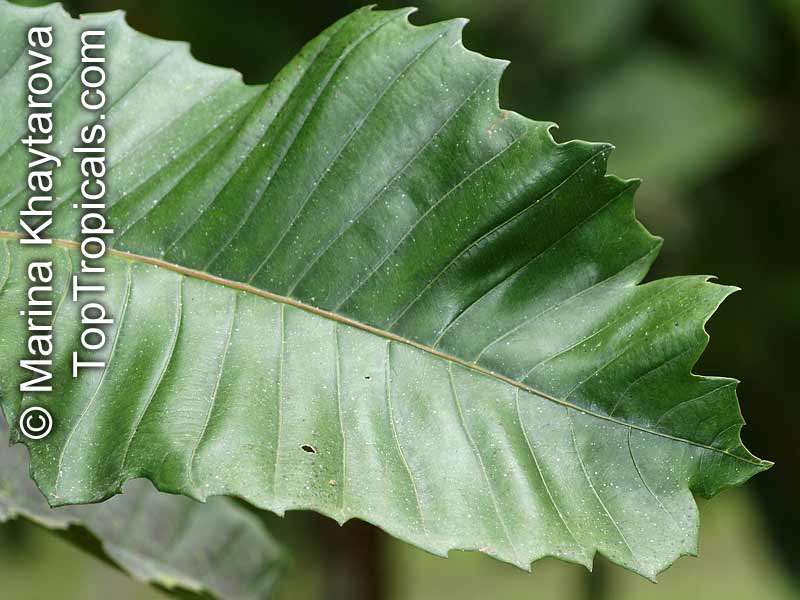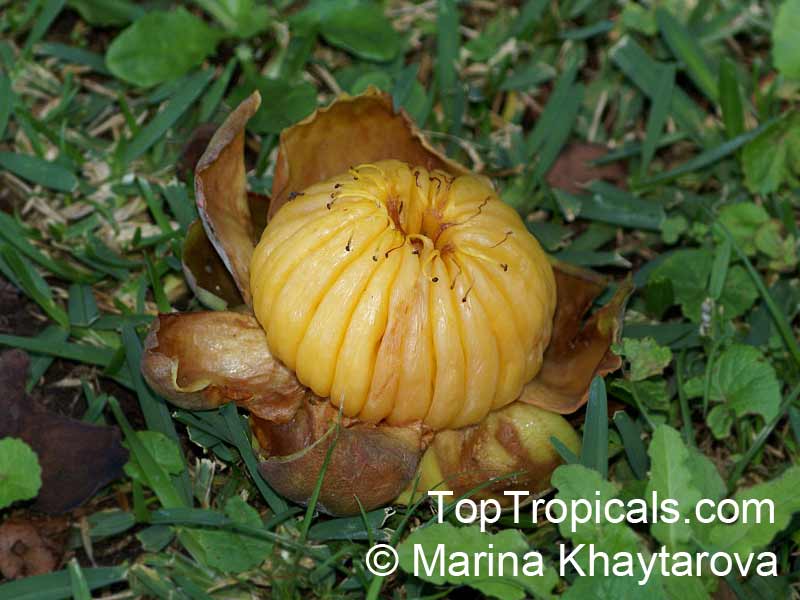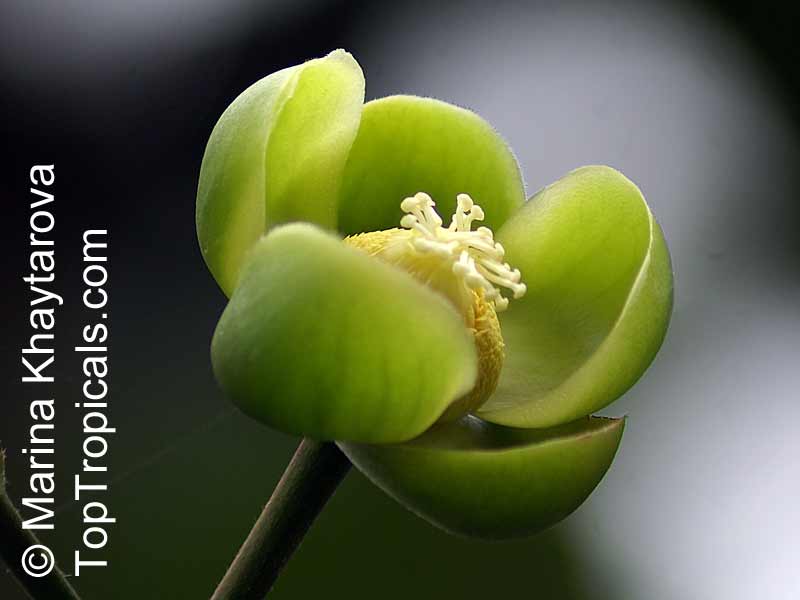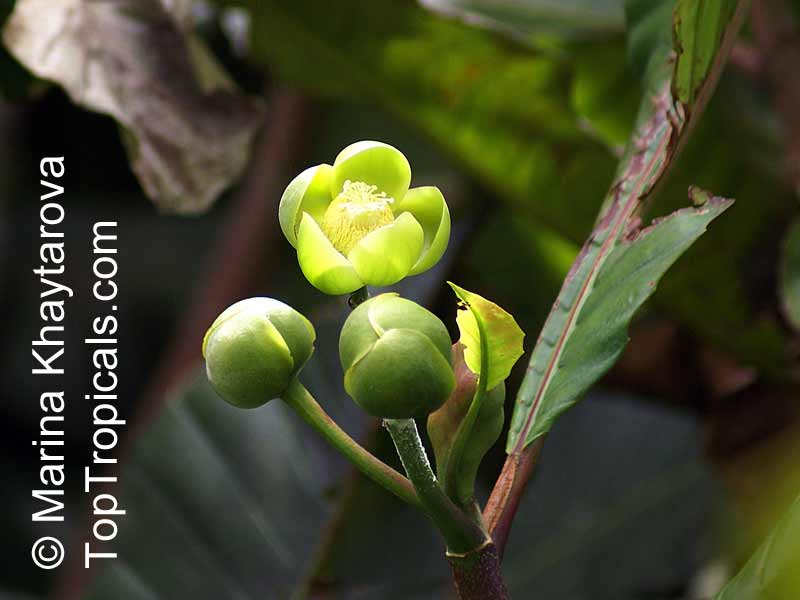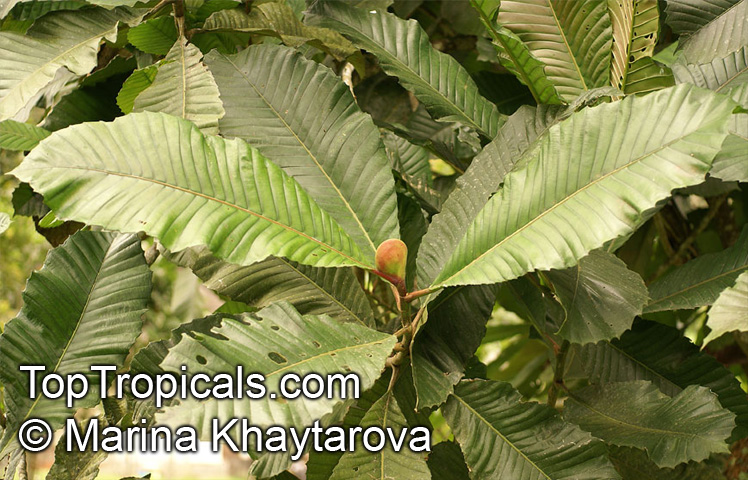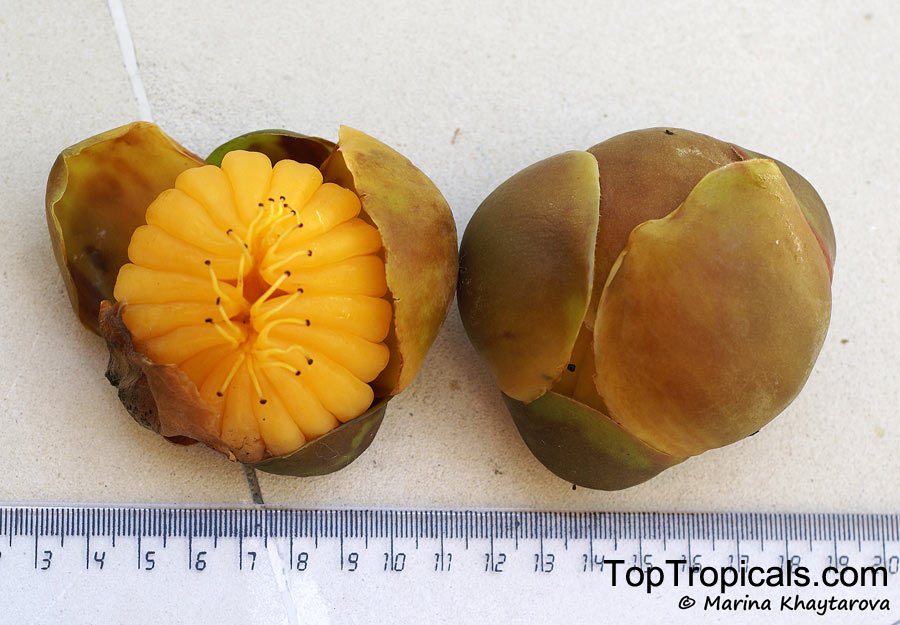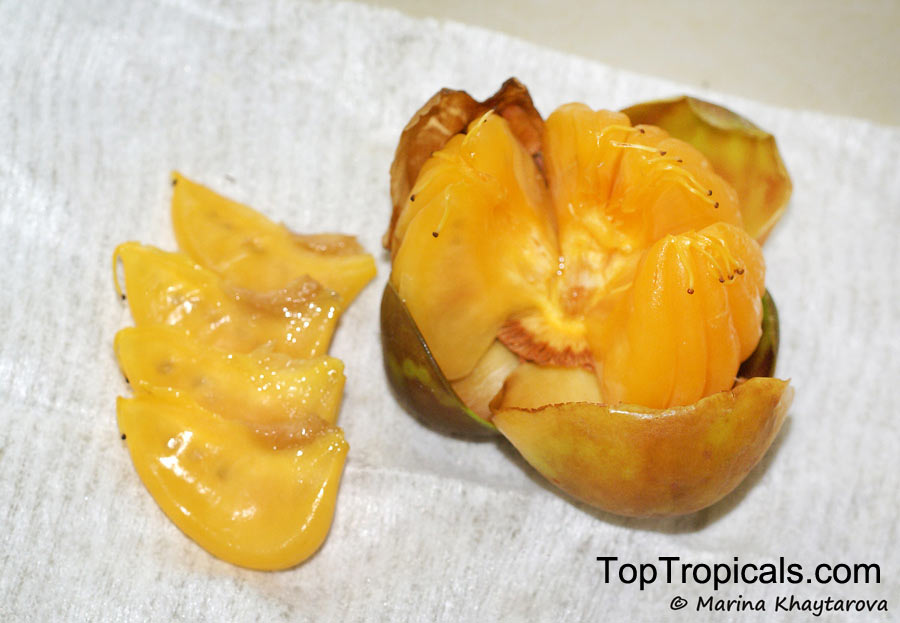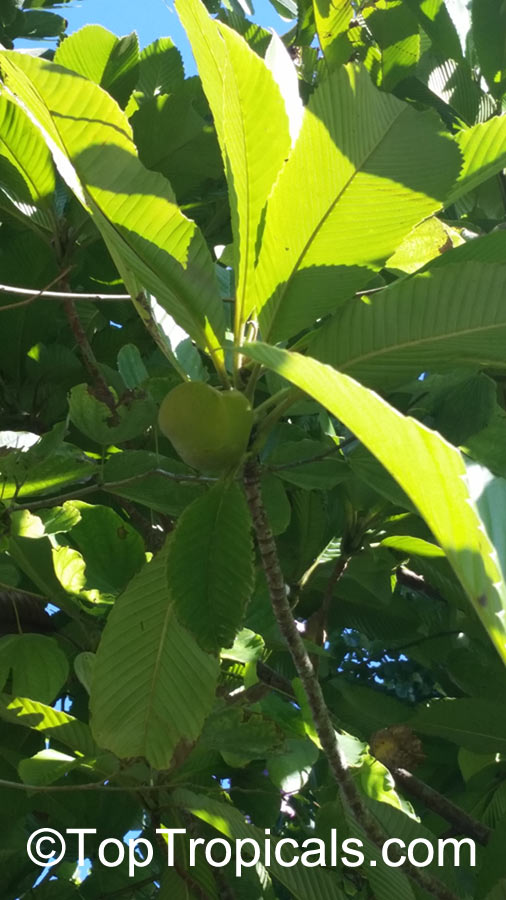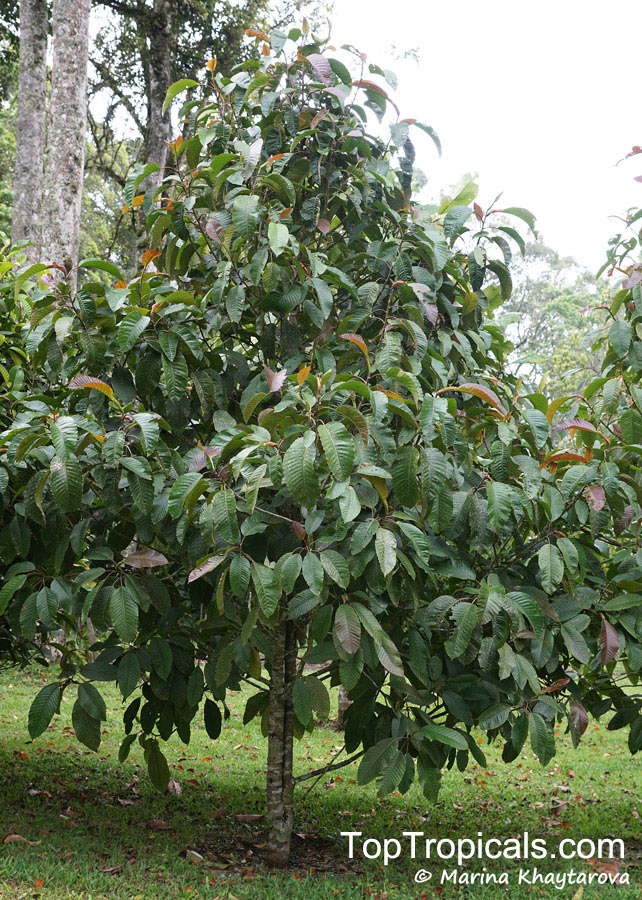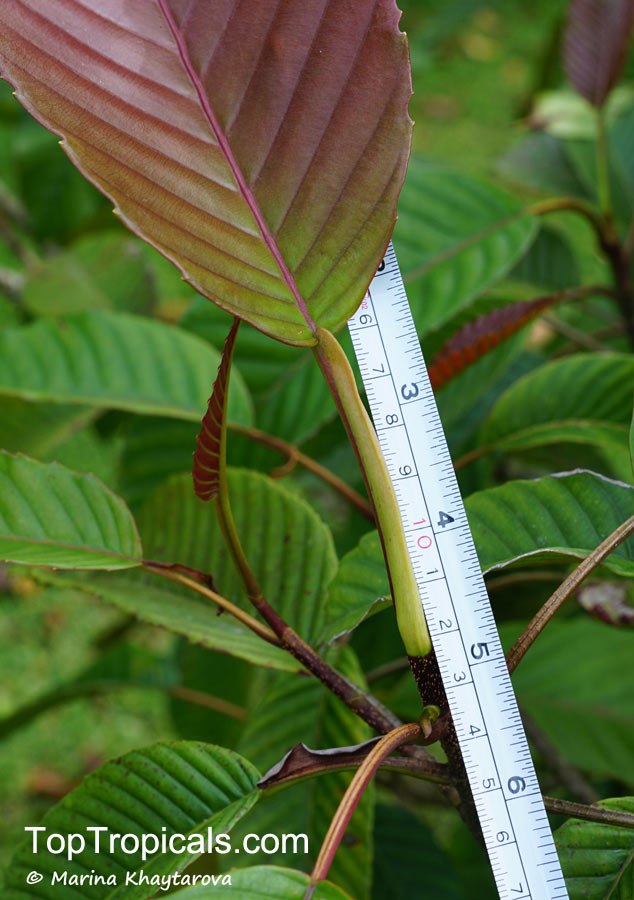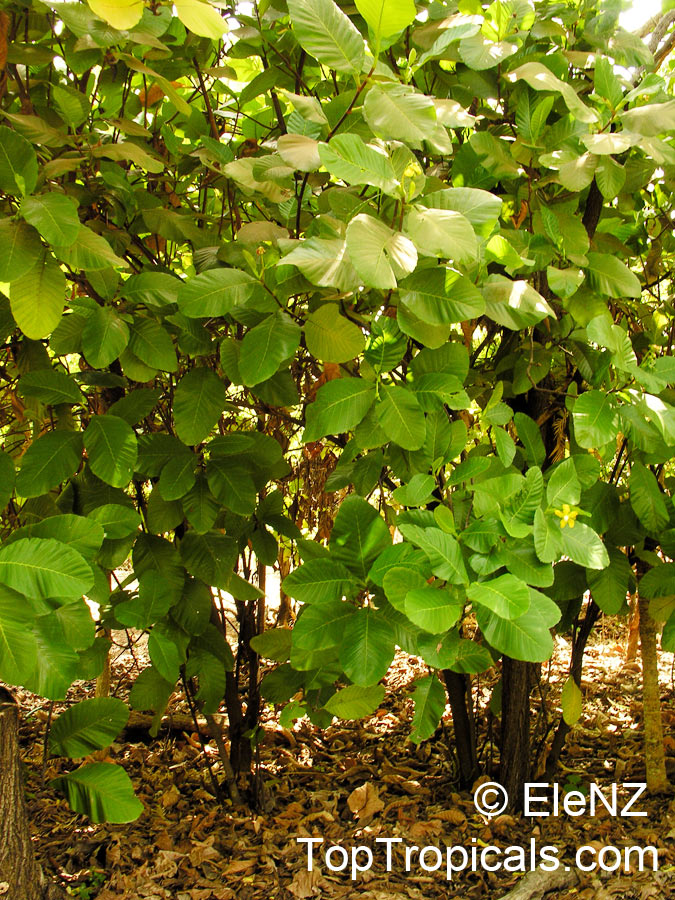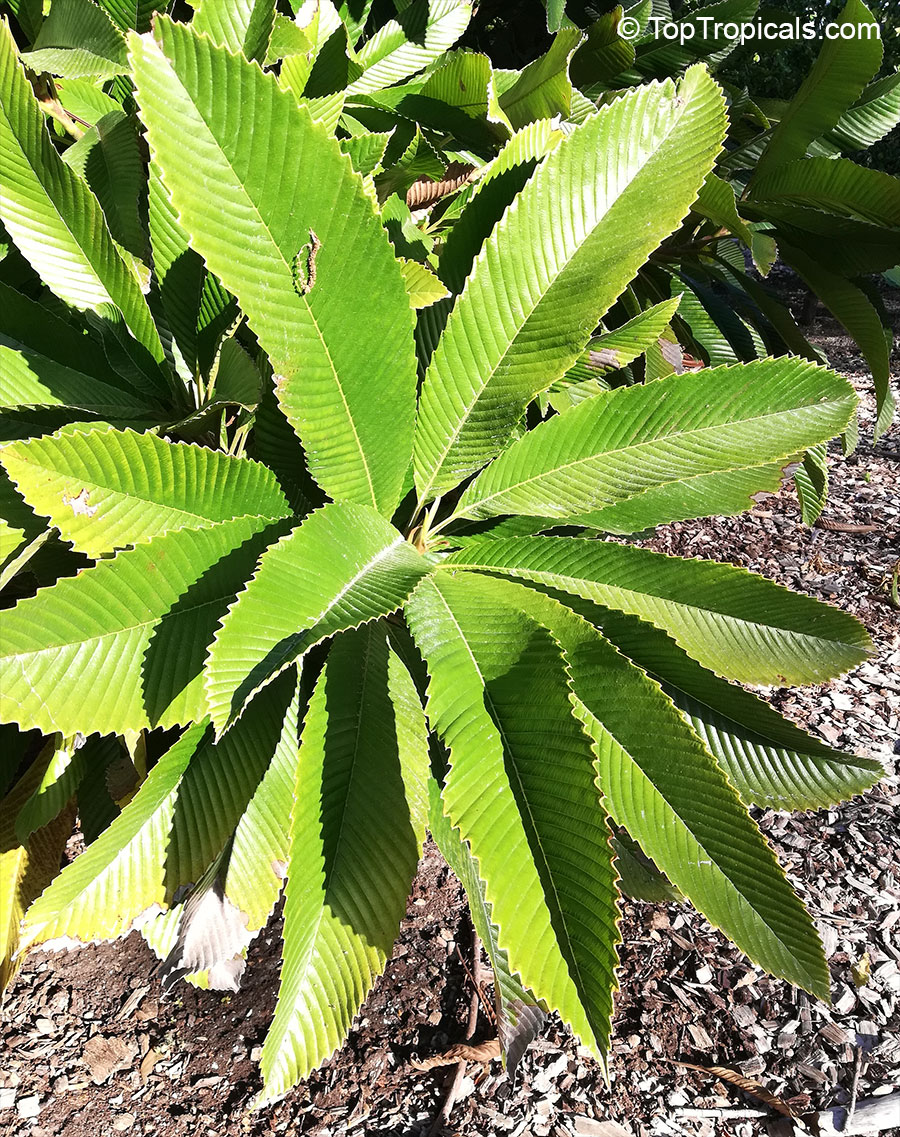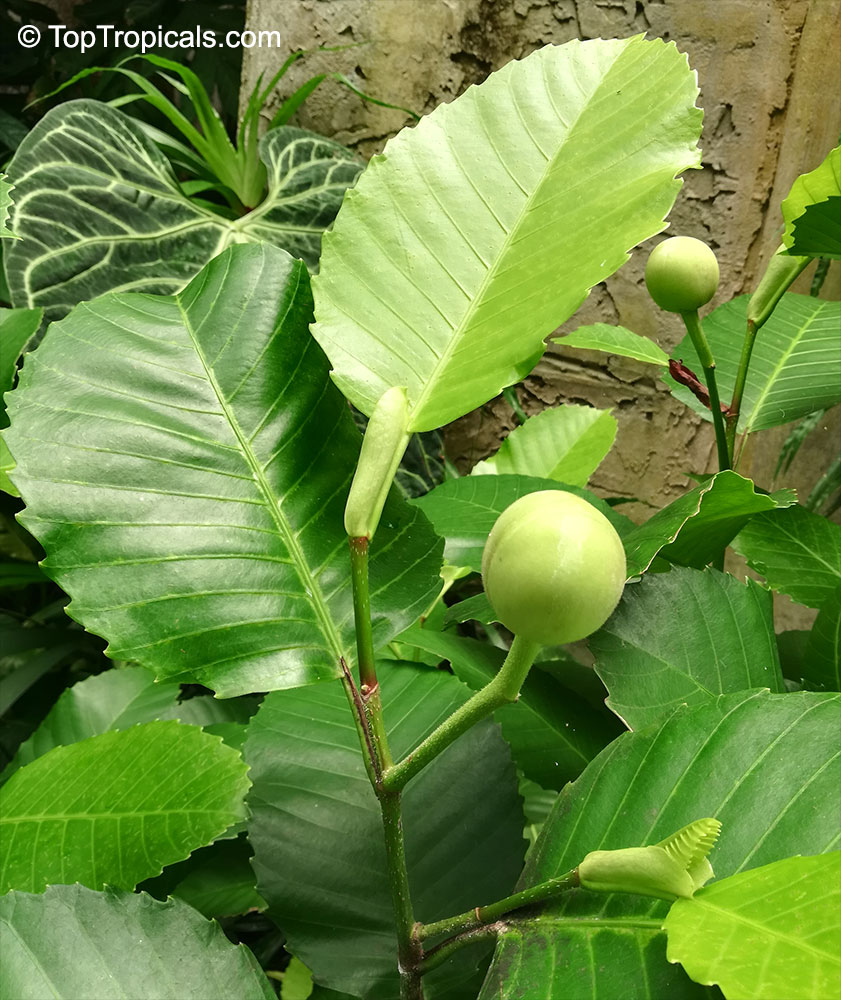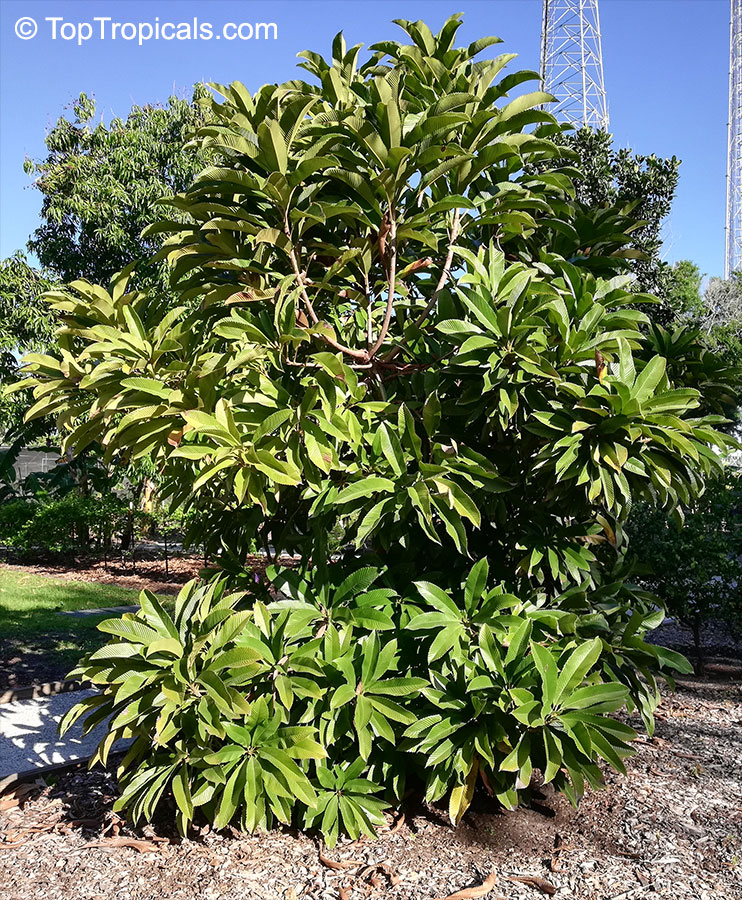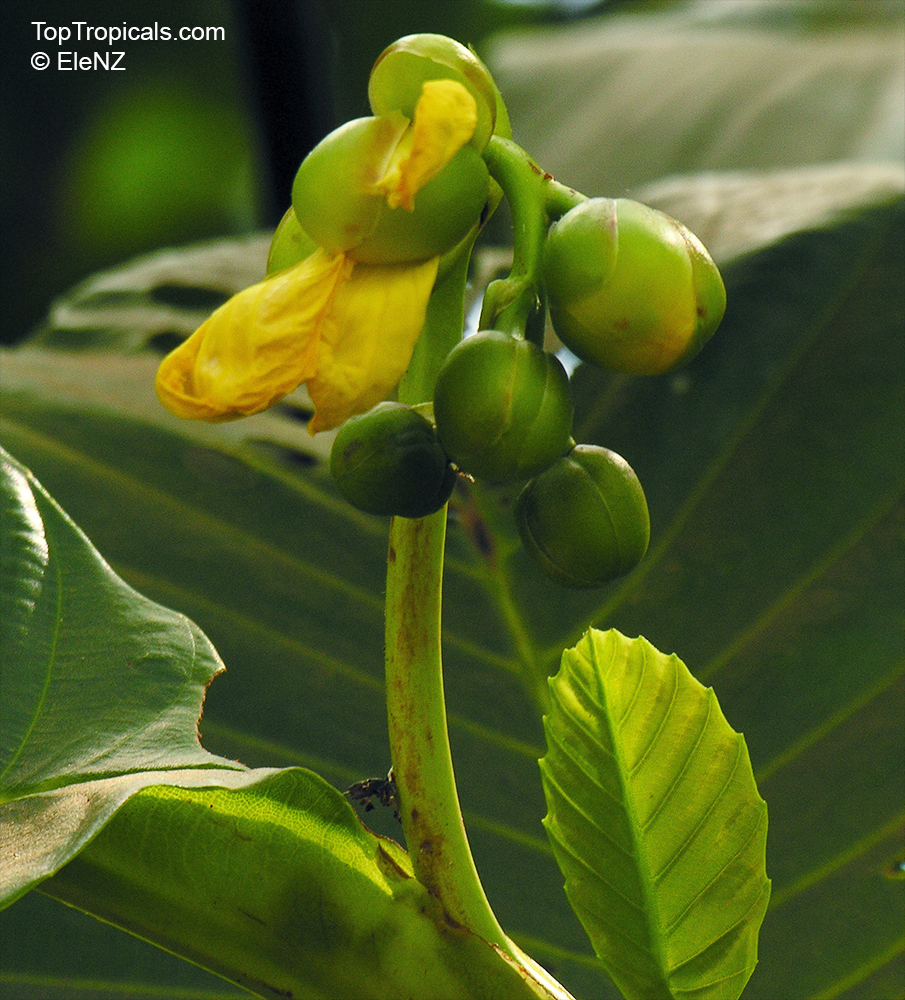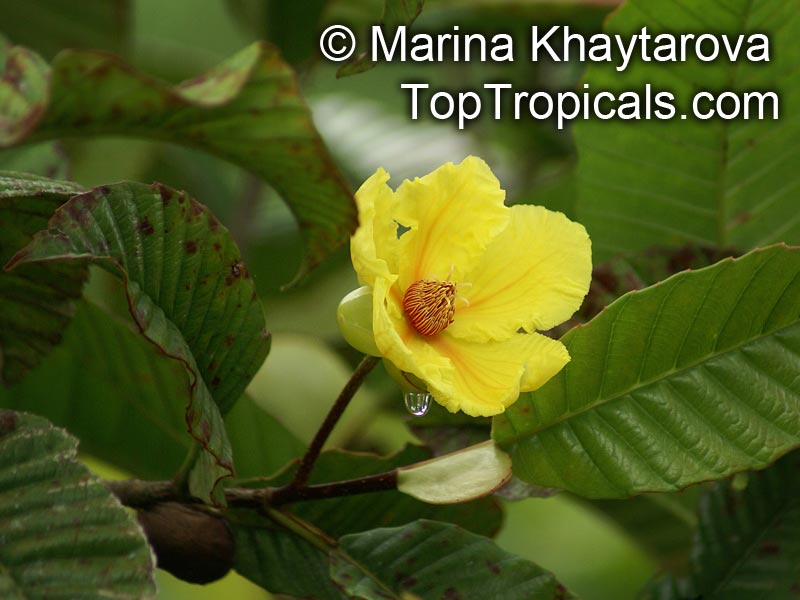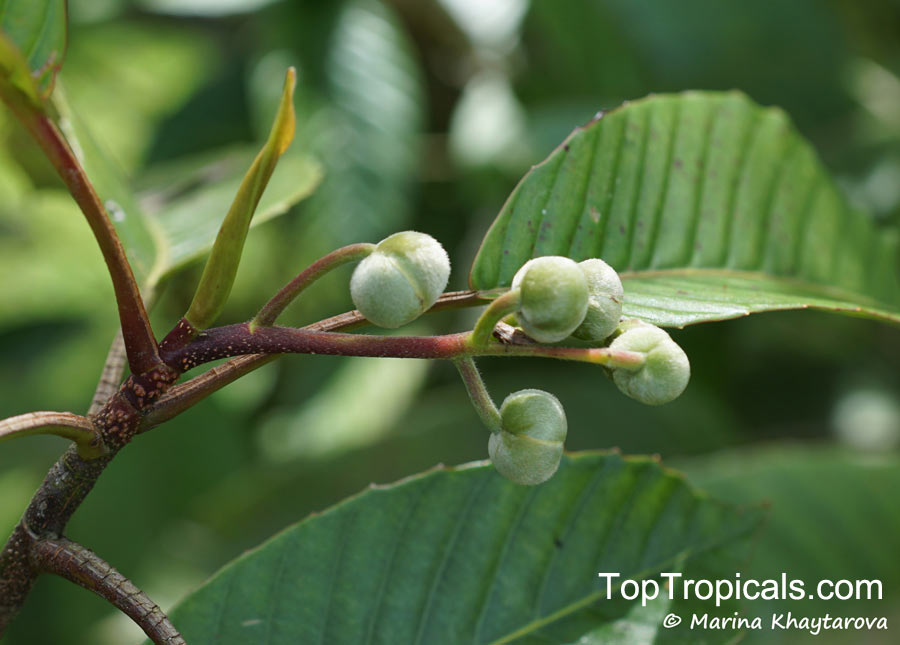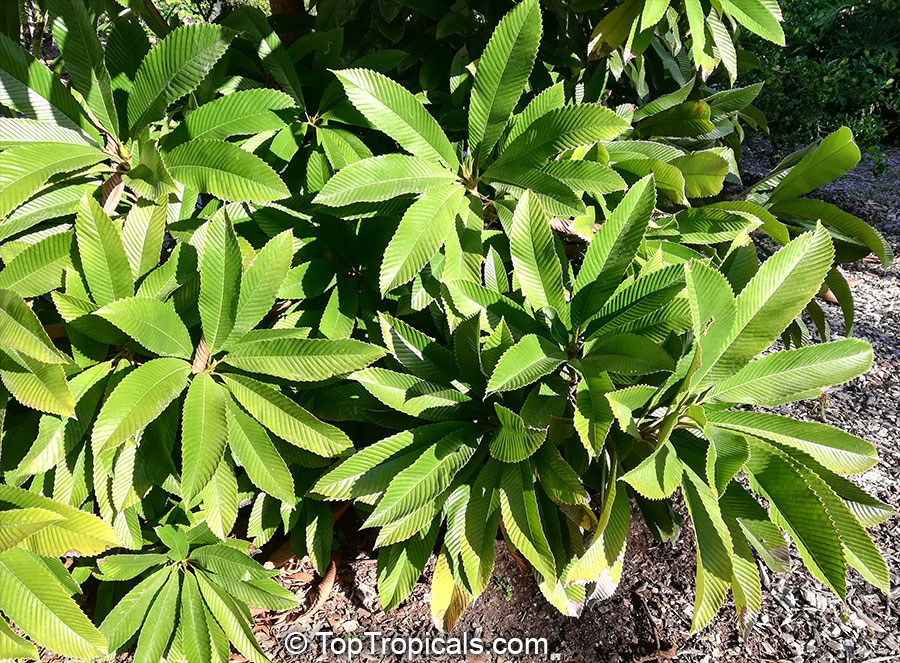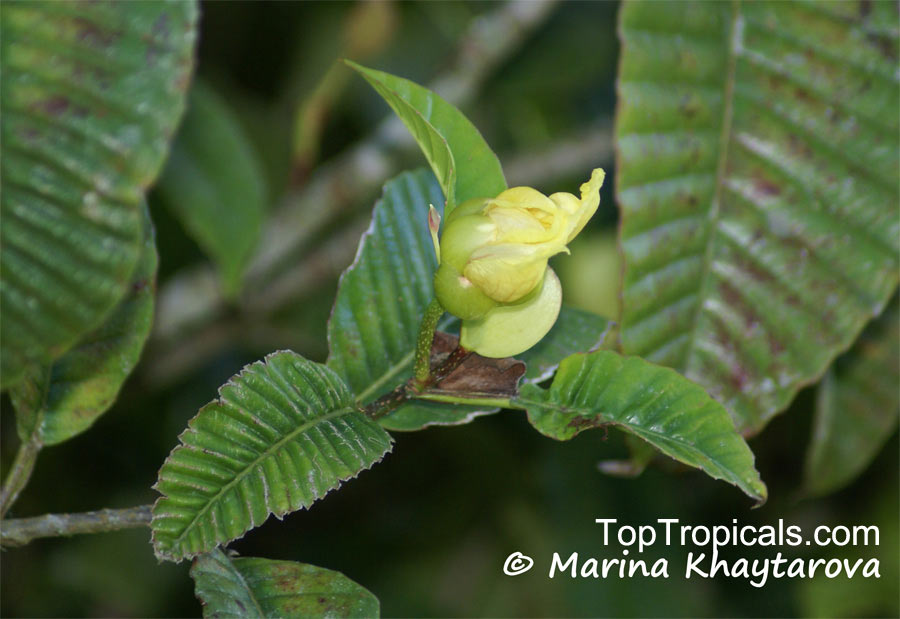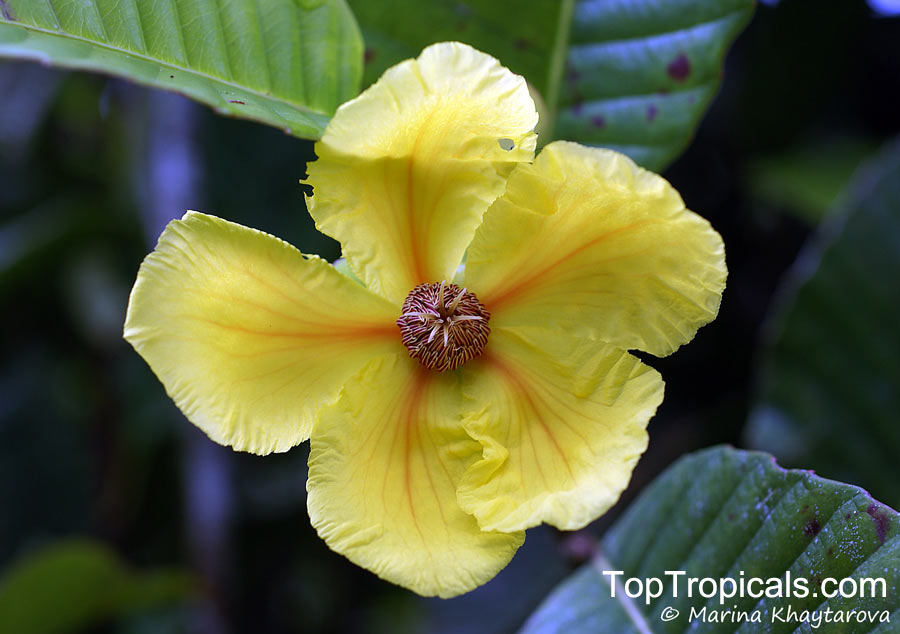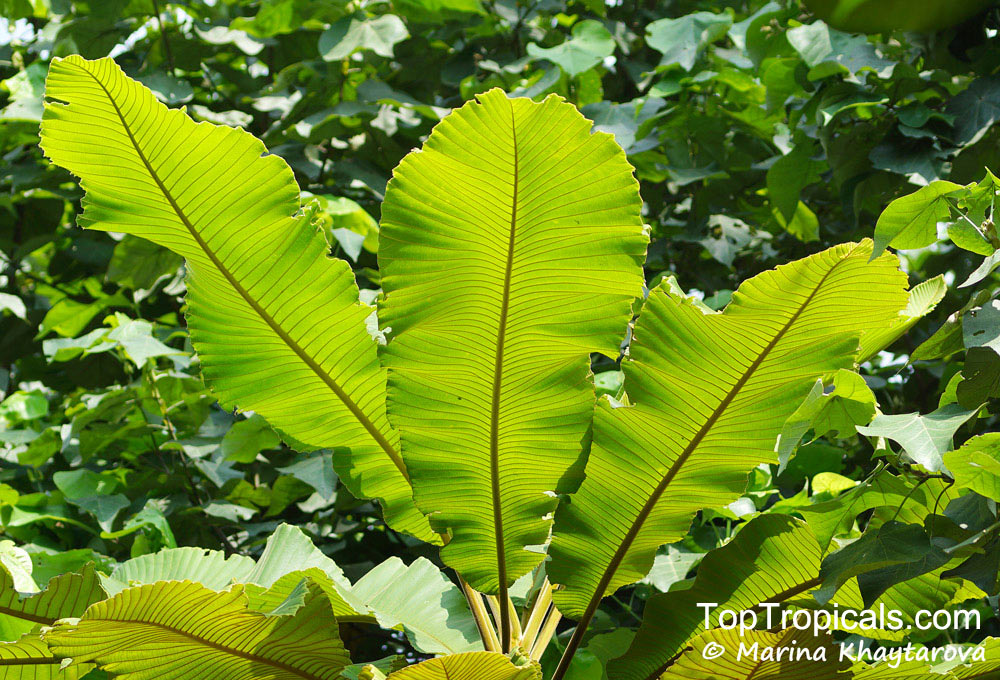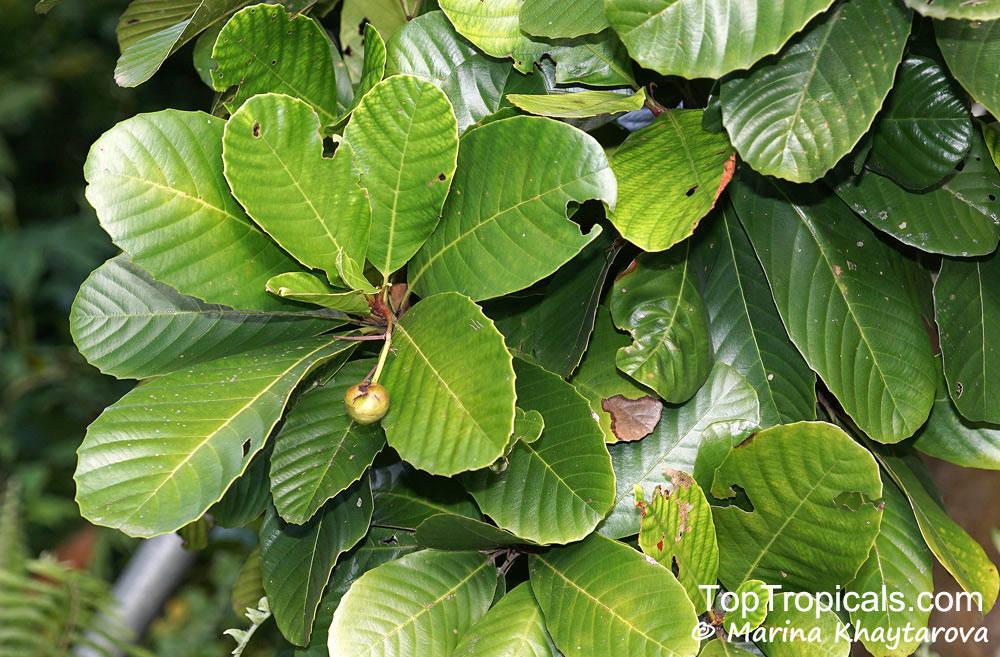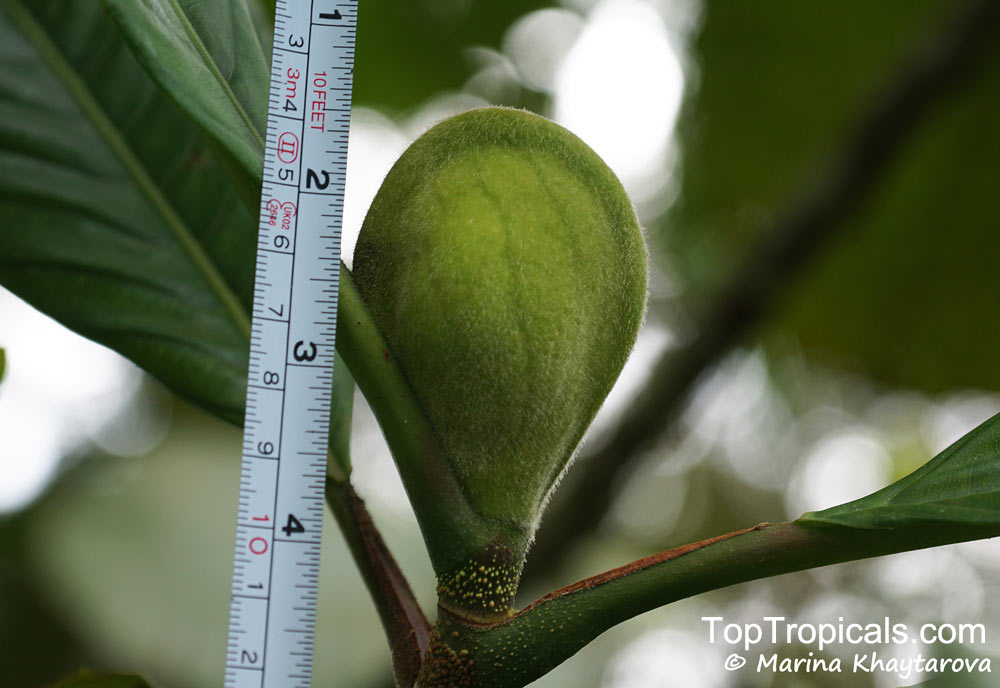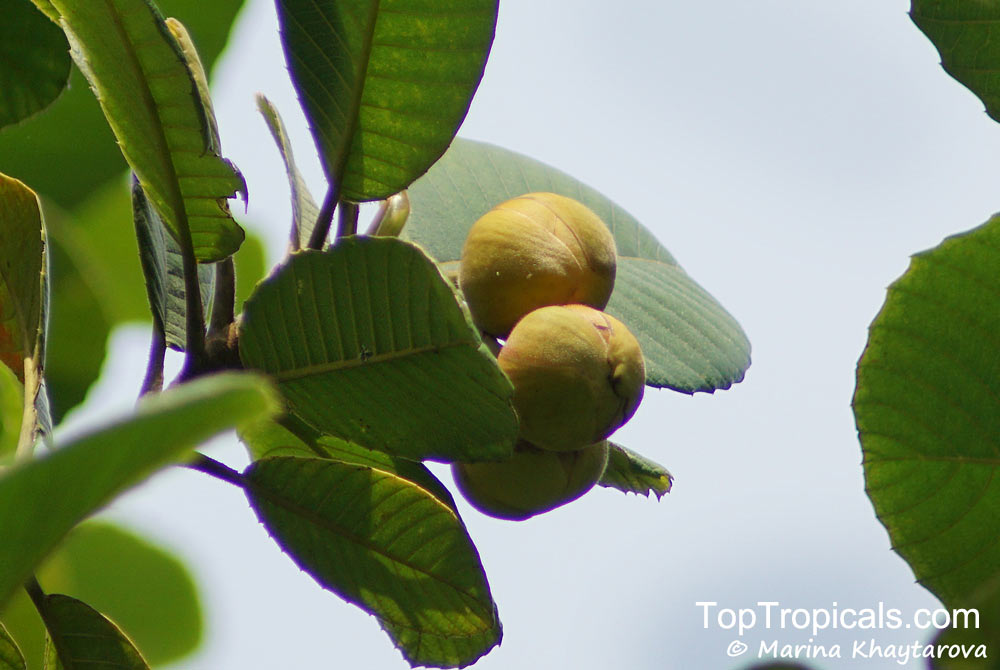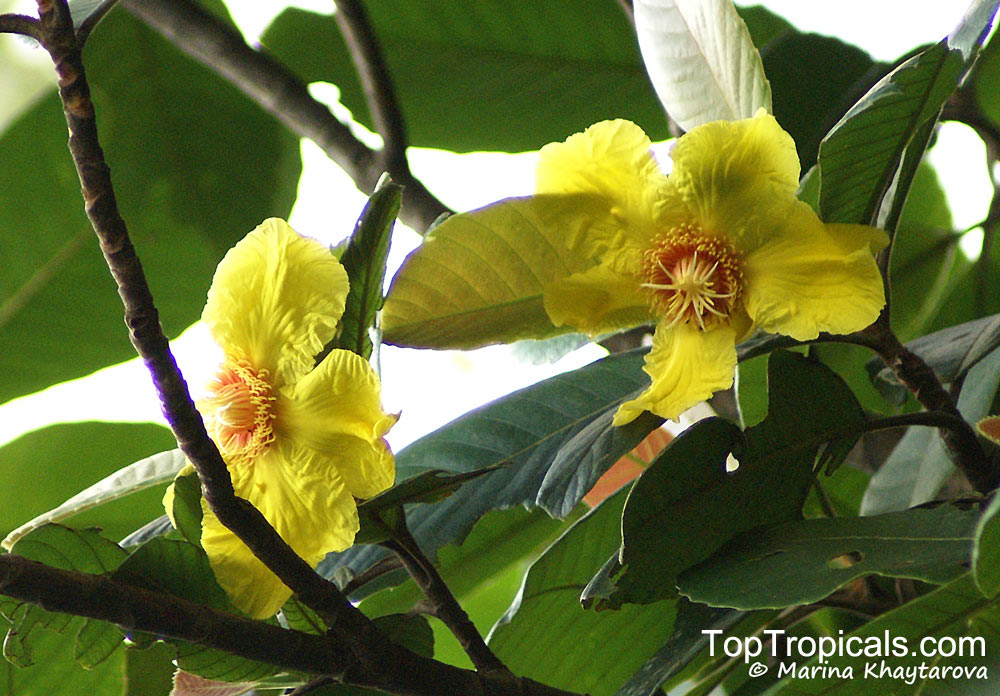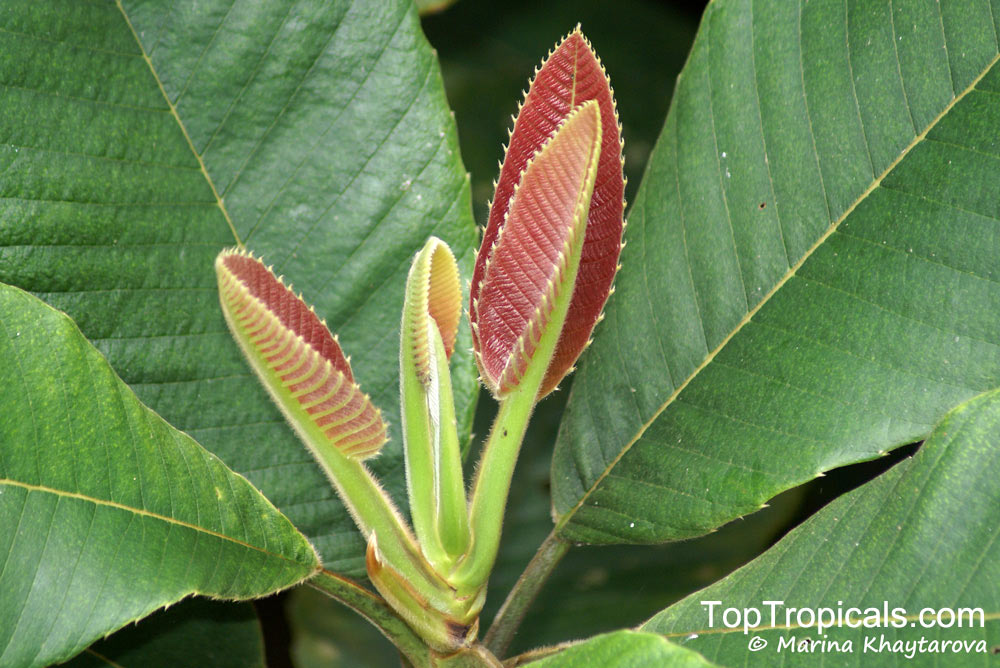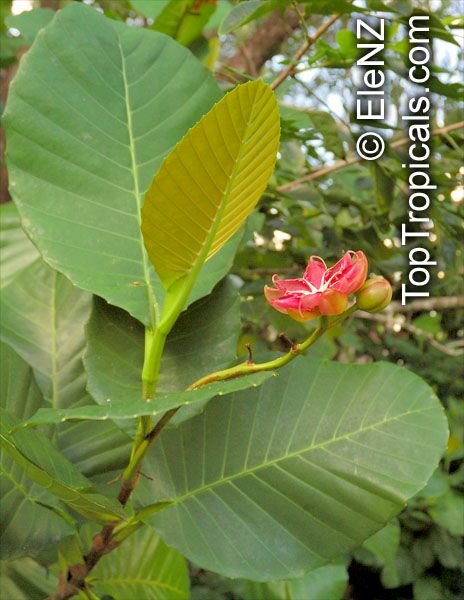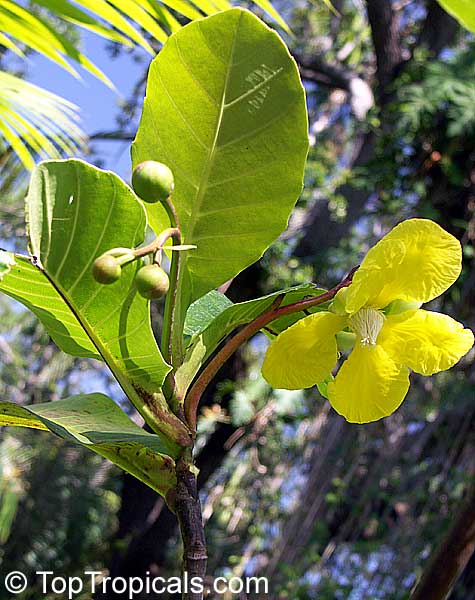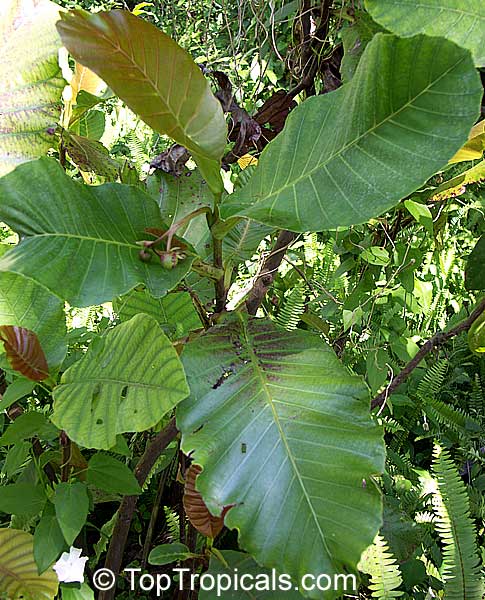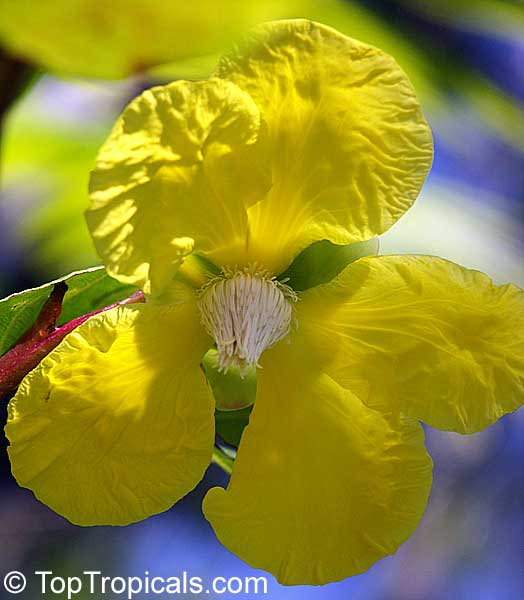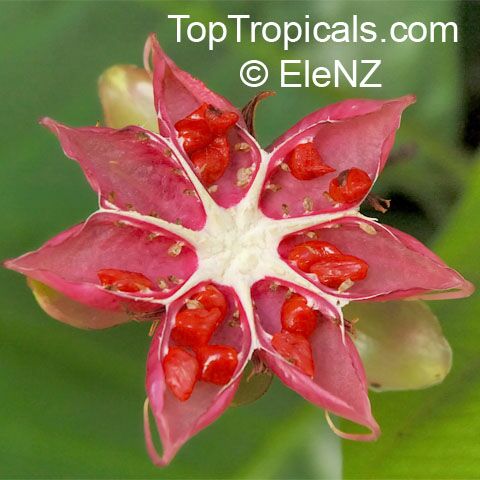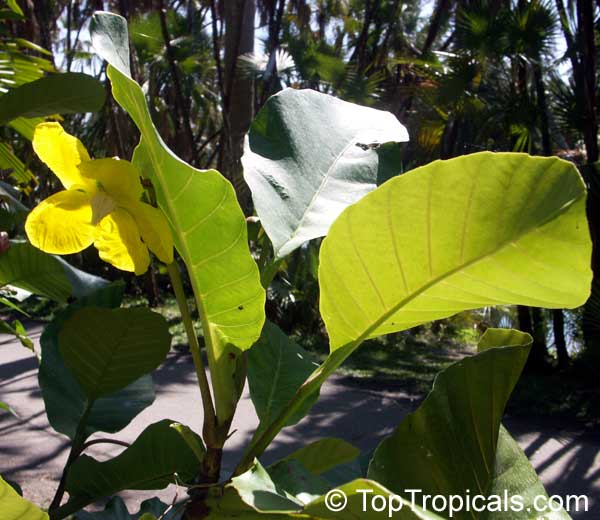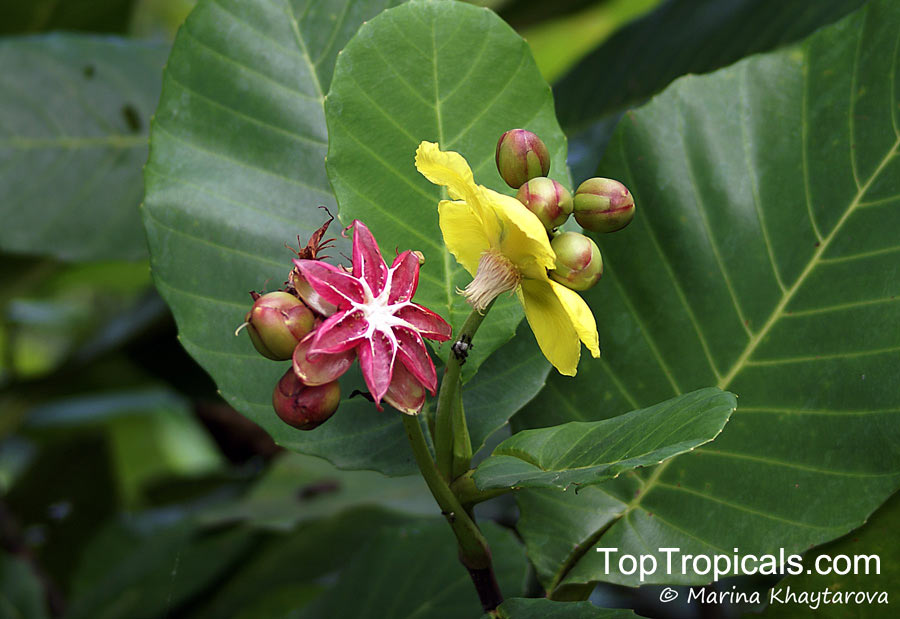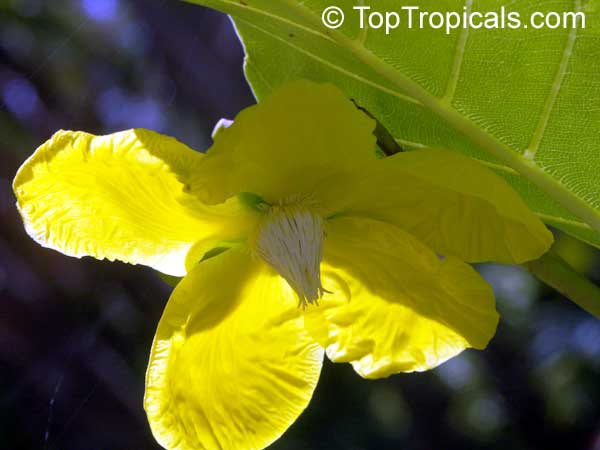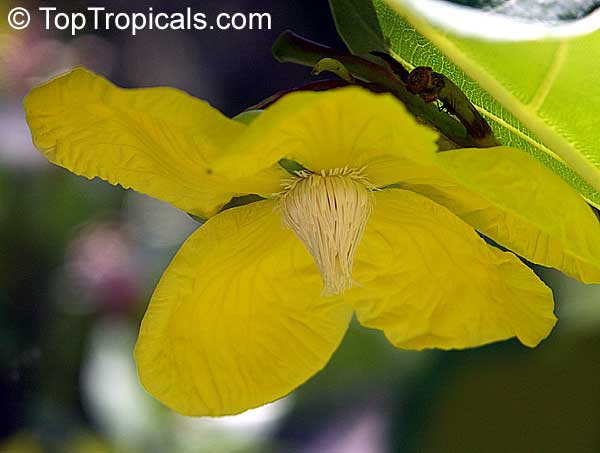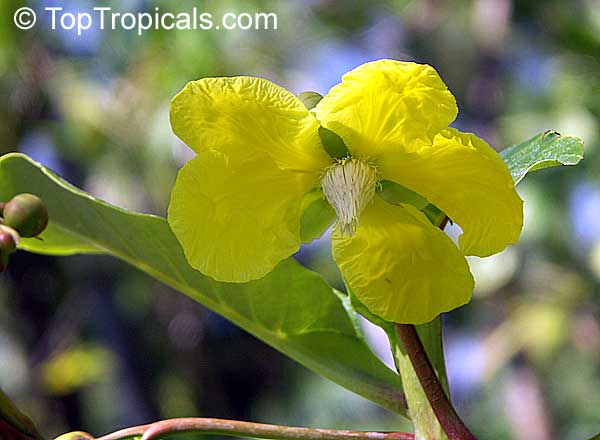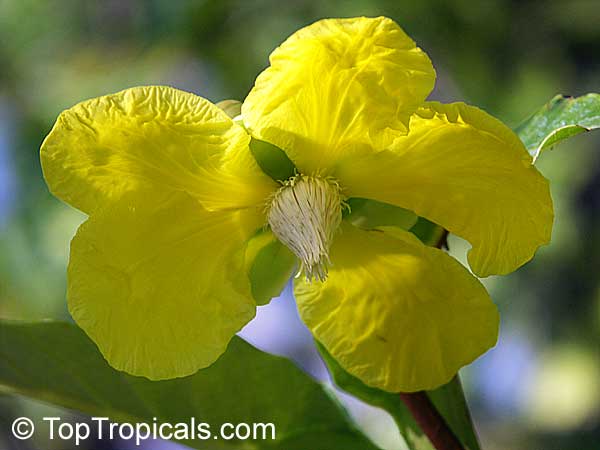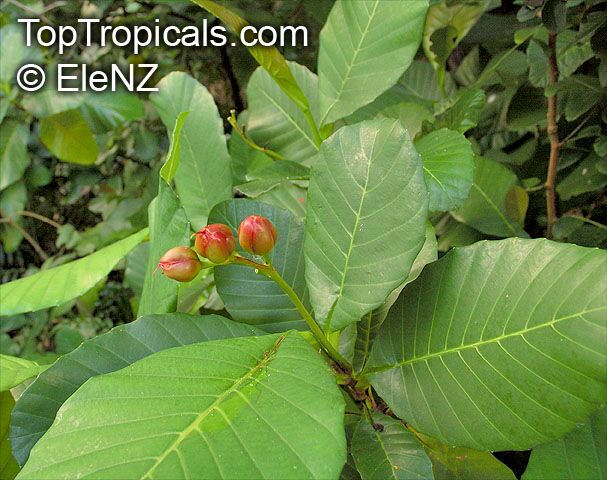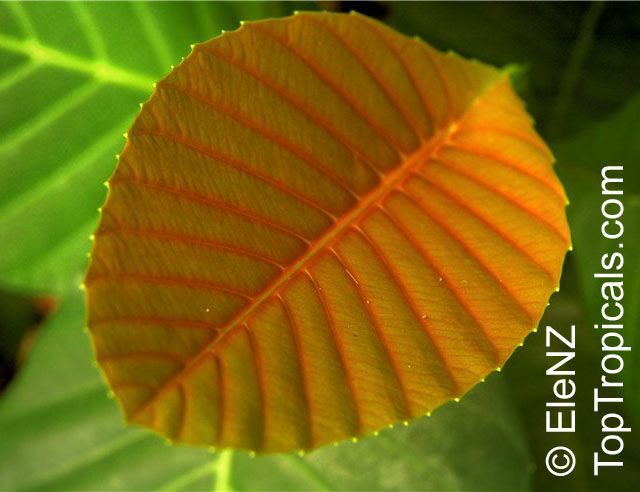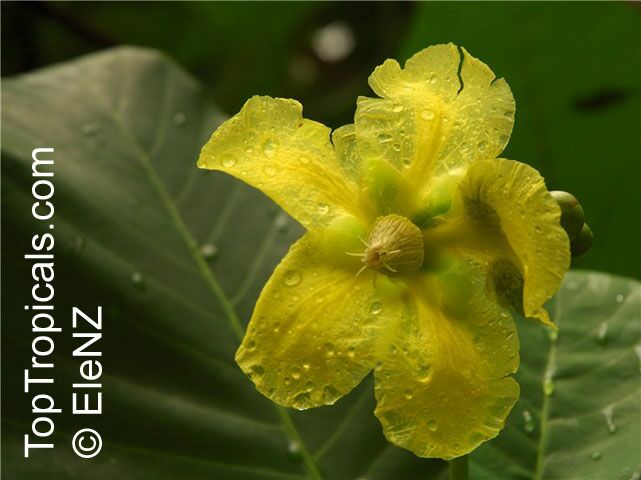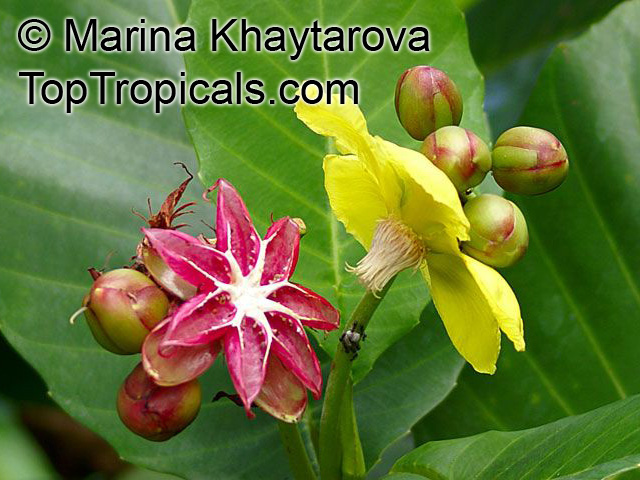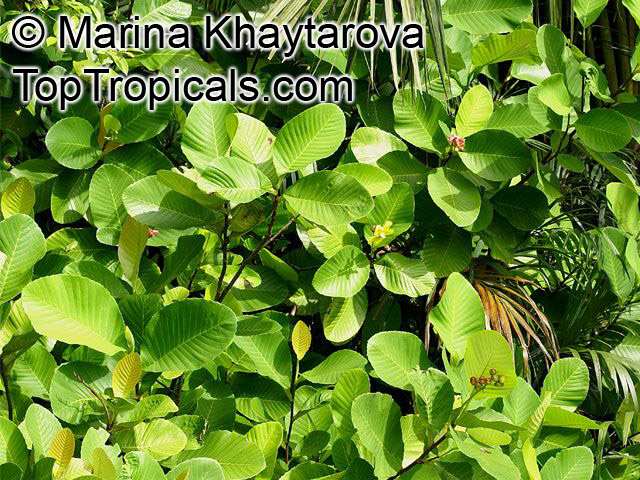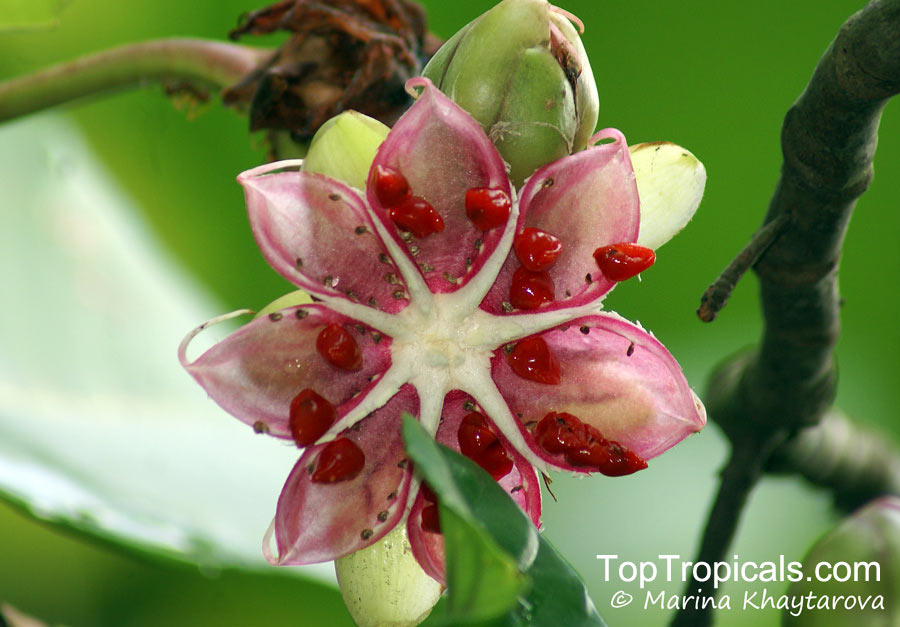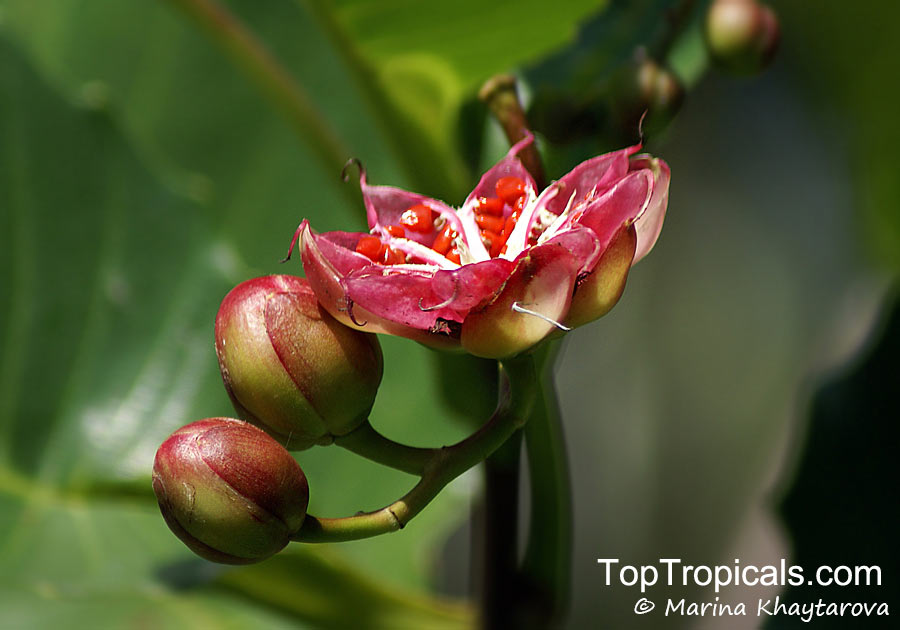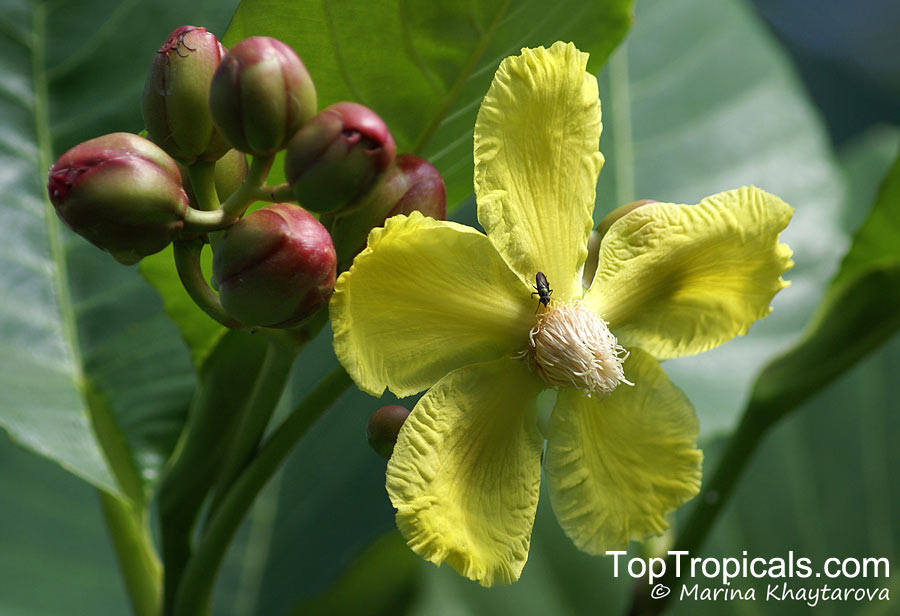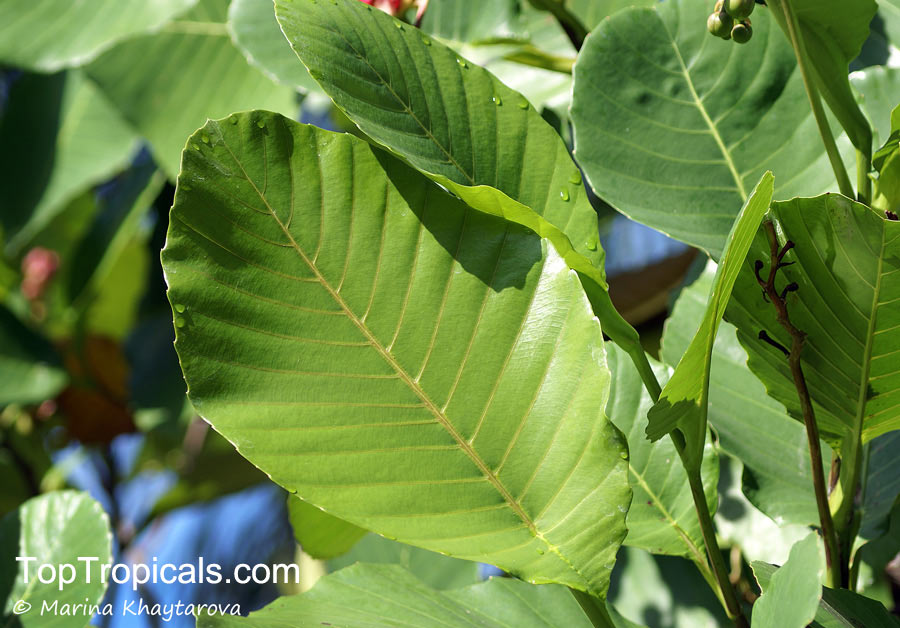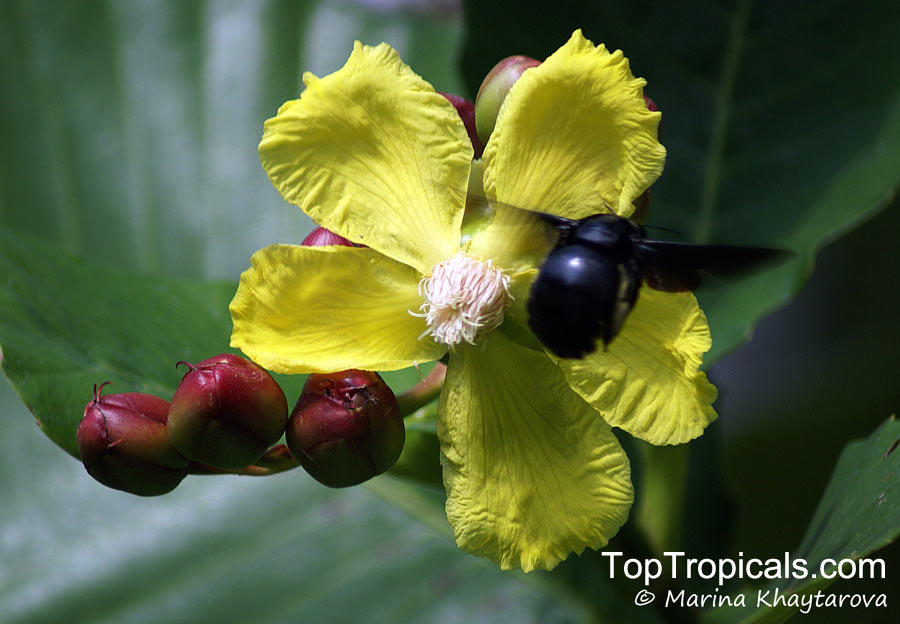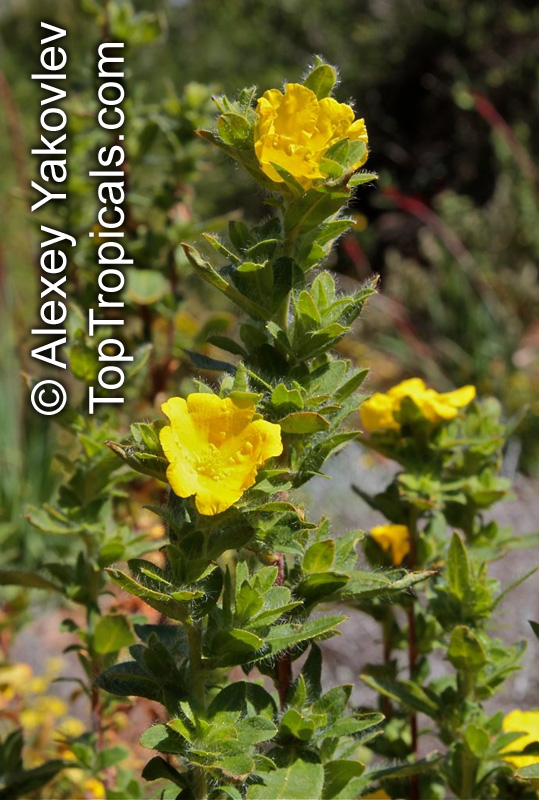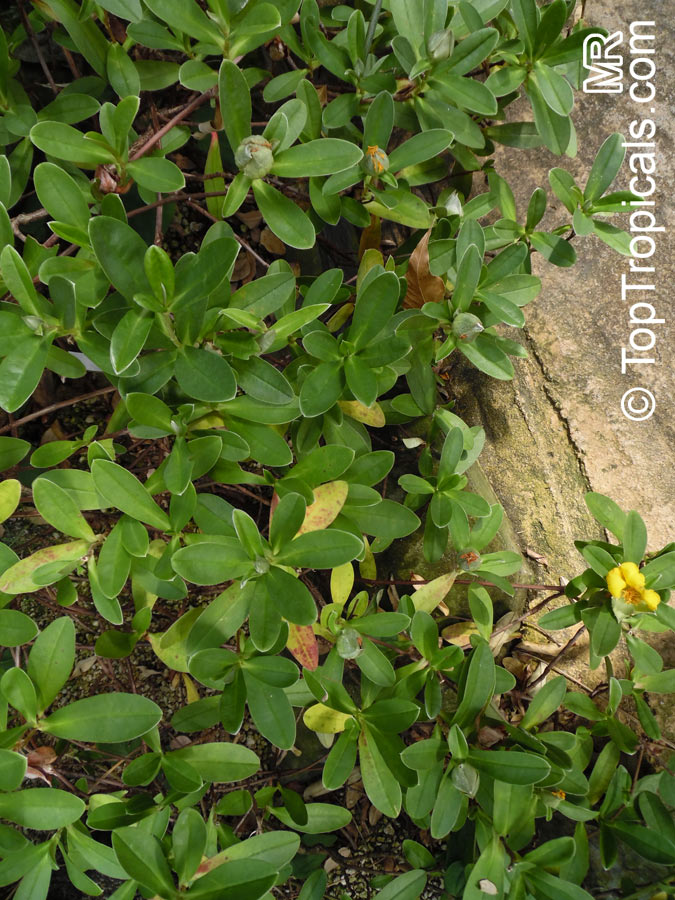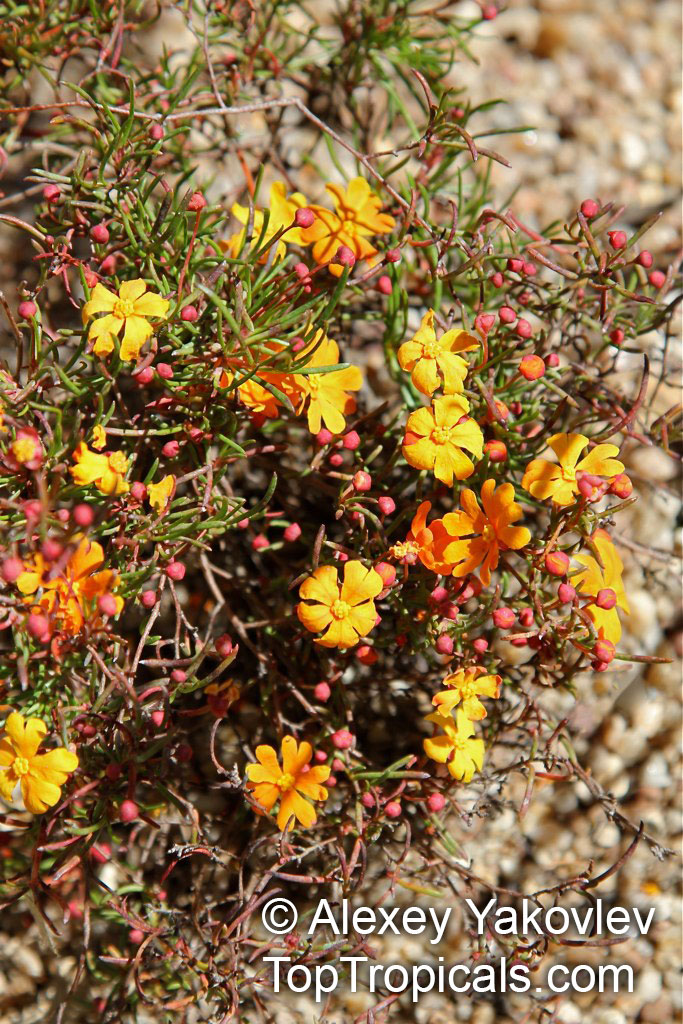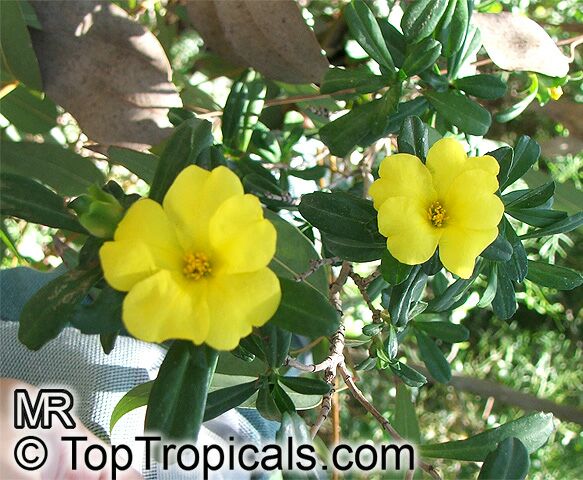Dilleniaceae - Botanical Family
Top Tropicals Plant Encyclopedia
| Number of plants found: 14 | Next | 
|
Go to page: | 1 | 2 |
Botanical name: Dillenia alata
Common names: Red Beech, Golden Guinea Tree
Family: Dilleniaceae
Origin: Australia





Red Beech derives its common name from its beautiful flaky papery trunk, initially copper/pink and becoming maroon with age. It has large leaves, and large yellow flowers. The open fruit reveal bright red valves and black seeds.
Botanical names: Dillenia excelsa, Wormia excelsa
Common name: Simpor Laki
Family: Dilleniaceae
Origin: Indonesia





Botanical names: Dillenia indica, Dillenia speciosa
Common names: Elephant Apple, Chulta, Hondapara Tree, Ma-tad
Family: Dilleniaceae
Origin: Indonesia







This evergreen spreading tropical tree isup to 60 feet tall. It has beautiful white fragrant flowers, toothed leaves and globose 3-4" fruits with small brown seeds. The greenish-yellow fruit, which has a thick protective covering, is edible; unripe fruits are cooked to make pickle and chutney. The juicy pulp is aromatic but very acid. Can be used as a ornamental tree. Protect from frost or plant in frost free areas.
Botanical name: Dillenia ingens
Common name: Giant-leaved Dillenia
Family: Dilleniaceae
Origin: Solomon Islands




Botanical name: Dillenia ovata
Common names: Kadah Simpoh, Simpoh Beludu
Family: Dilleniaceae
Origin: Tropical Asia






Botanical name: Dillenia philippinensis
Common names: Katmon, Philippine Elephant Apple, Philippines Simpoh
Family: Dilleniaceae
Origin: Philippines








This tropical looking beauty s a favorite tree among Filipino garden enthusiasts. It is endemic to the Philippines. Its fruit is known as elephant apple. Katmon grows in low to medium altitude forests throughout the Philippines, but does not survive the cold climates of the uplands.
The tree is buttress-forming, evergreen, and shade tolerant. The bark is smooth with shallow fissures. The leaves are large, 1-2 ft long, leathery, shining, and coarsely toothed at the margins. Its flowers are white, large, showy, and also very large, up to 1 ft wide, with showy reddish pistils and stamens. The edible fruits are rounded, 2-3" in diameter, with large fleshy sepals tightly enclosing the true fruit.
Flowers last only one day, but the plant stays in bloom all summer through fall, with multiple flowers and buds that keep opening every day.
The tree is harvested for its timber and the edible fruits are said to have medicinal value.
The plant is perfect for container and indoor culture, with showy tropical leaves, beautiful flowers, shade tolerance, and compact growth.
Botanical names: Dillenia serrata, Dillenia elliptica
Common name: Dillenia
Family: Dilleniaceae
Origin: Sulawesi







Botanical name: Dillenia sp.
Common name: Dengen
Family: Dilleniaceae
Origin: Southeast Asia





Species:
Dillenia celebica
Dillenia ochreata
Dillenia reticulata
Dillenia retusa
Dillenia turbinata
Botanical names: Dillenia suffruticosa, Wormia suffruticosa
Common names: Simpoh Air, Shrubby Dillenia, Shrubby Simpoh
Family: Dilleniaceae
Origin: West Malesia








Dillenia suffruticosa (Simpoh Air) is a small tree that grows 10-20 ft tall and is native to West Malesia. It contains large, glossy oval-shaped leaves and large, yellow and orange cup-shaped flowers. The flowers are highly fragrant and attract butterflies and hummingbirds. They only last for a day and usually open at 3 am. Following the flowers will be egg-shaped fruits that split open at 3 am to reveal red arils and seeds. The taste of the fruit is sweet and sour and it is edible.
Simpoh Air is useful for many reasons. The leaves can be used to wrap food and tailor birds can use them to make nests. The Simpoh Air sends out very deep tap roots to reach underground water sources. The tree is used to detect water as it always grows near water. The fruit pulp can be used to wash the hair (Brunei). Staunching bleeding wounds is also a use of this plant.
This plant should be grown in full sun to semi-shade areas and requires regular watering. It is suitable for USDA zones 9-11. In cold regions, it can be grown in a pot and kept indoors during the winter months. It tend to require a heavy threshold of initial watering in order for its roots to establish properly. Too much water can lead to root rot.
The plant is able to flower and fruit up to 3-4 years of age, yielding up to 150 fruits per tree. The fruit can now be found commercially and its unique flavor, aroma and nutritional value attract many people to its consumption. Eating the ripe fruit can bring a plethora of health benefits such as decreasing the risk of heart disease and diabetes while providing the body with dietary fiber and minerals. It is also a good source of Vitamin C, phosphorous, calcium and other essential minerals for the body's proper functioning.
Simpoh Air can live up to 50-100 years and can become a beautiful addition to summer days with the right balance of water.
Botanical name: Hibbertia sp.
Common name: Guinea Flower
Family: Dilleniaceae
Origin: Australia, New Guinea







Hibbertia sp. can quickly become an attention-grabber in your garden. Makes a excellent edging, or trailing from a container.
It is an evergreen to semi-evergreen vine and makes for a vigorous climber, capable of growing up to 10-20 ft tall. Can also be grown as a small tree or shrub. Dense, glossy green foliage and abundant yellow flowers makes a stunning contrast for any garden. Grows in full sun in moist well-drained soil. Prune as needed to prevent up against structures or walls.
Producing masses of deep yellow flowers in late winter and early spring with purple, papery sepals. Needs full sun and light infrequent watering. Once established will tolerate some drought, but prefers regular to moderate amounts of water. Grows in full sun and does well in USDA Zone 9-11, and in colder regions can be successfully grown in a large pot in part-shade. Container grown Hibbertia sp. need regular watering and should be repotted every 2-3 years into a new, larger pot to prevent root bounding. Fertilize twice a year, spring and summer, with a slow-release fertilizer.
| Next |  |
Use link to repeat this search:
https://toptropicals.com/cgi-bin/garden_catalog/cat.cgi?search_op=and&keyword_op=and&language=e&family=Dilleniaceae
&number=10&no_change_lang=1&user=tt&sale=1&first=0
